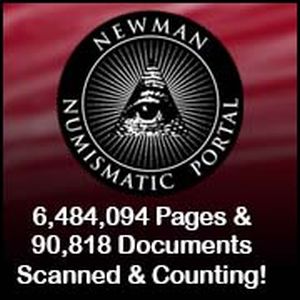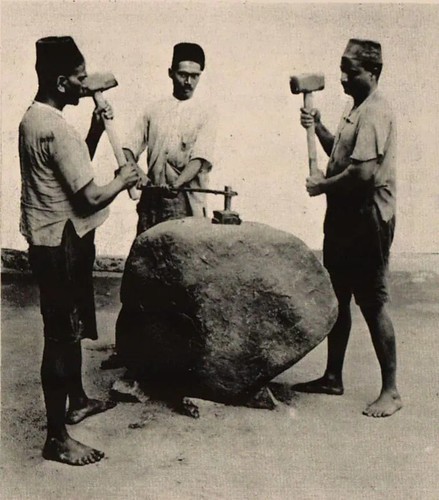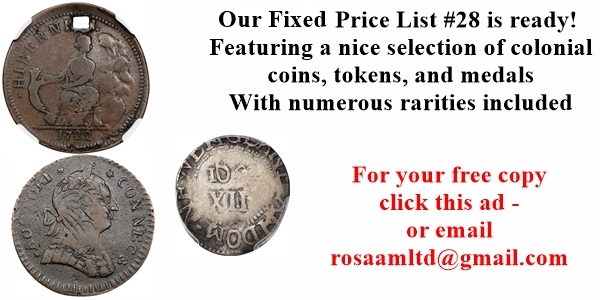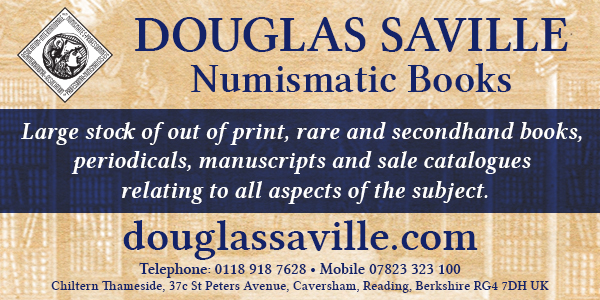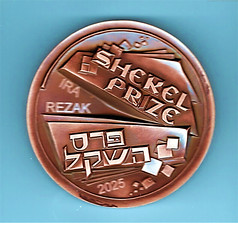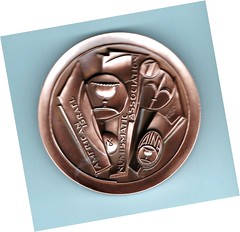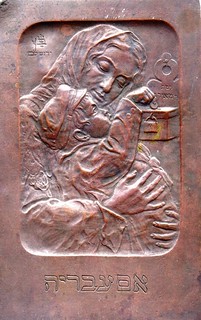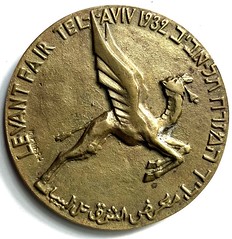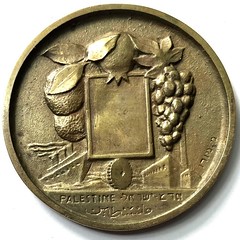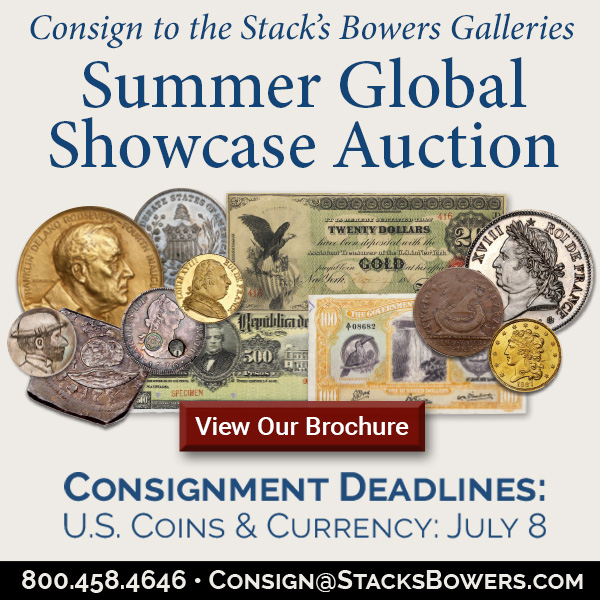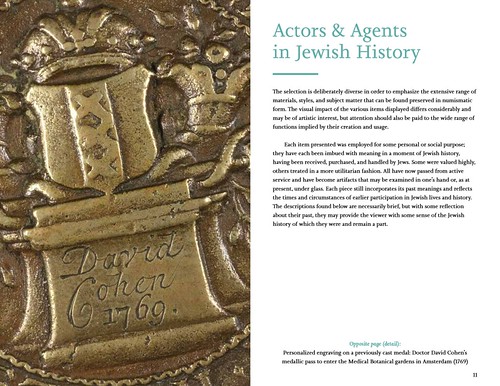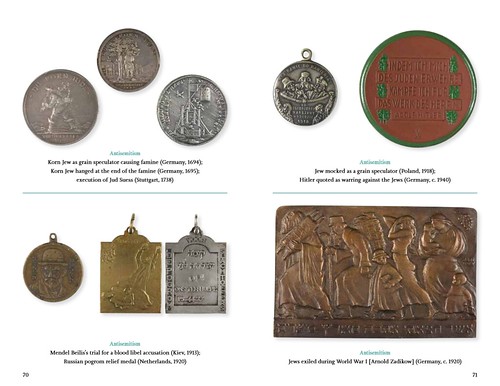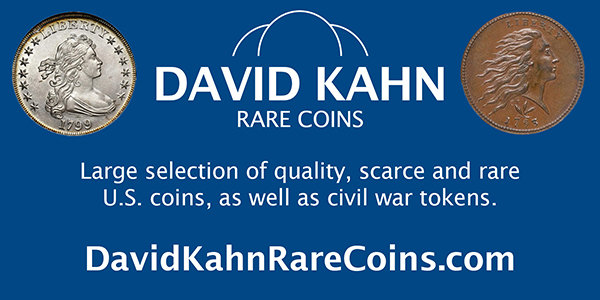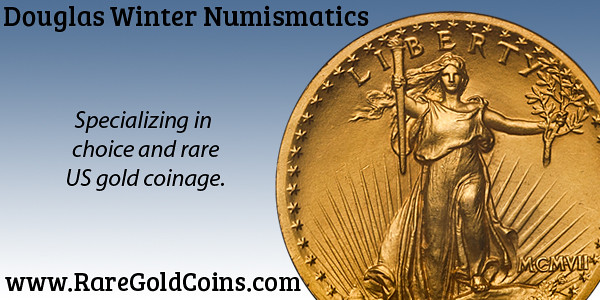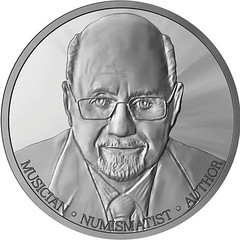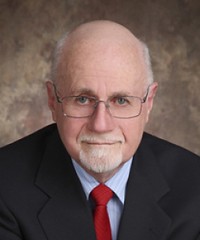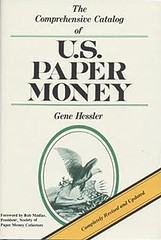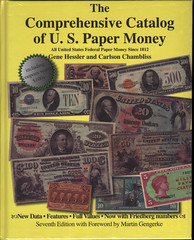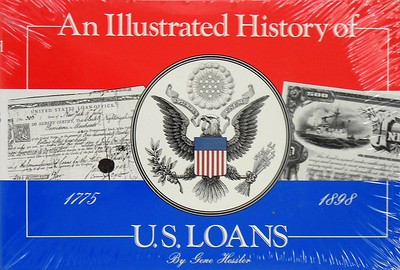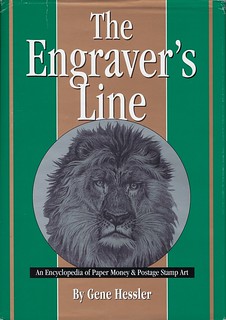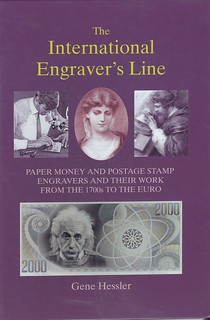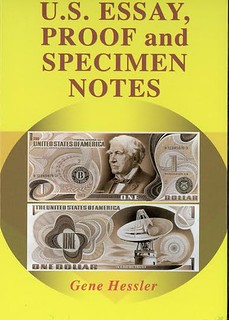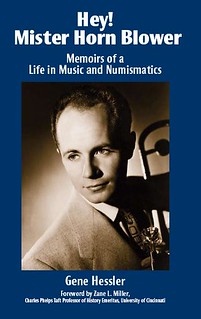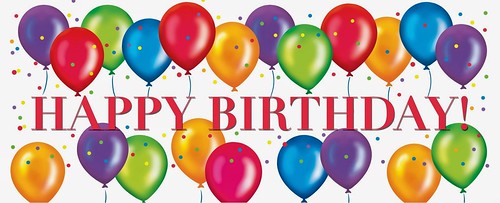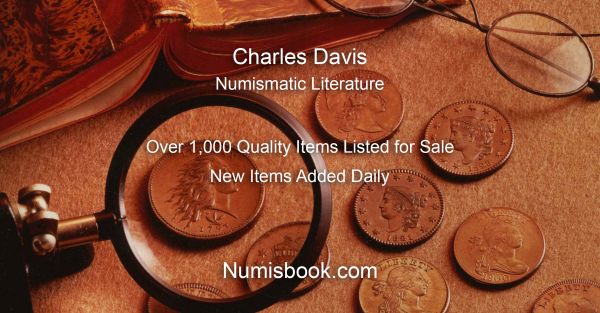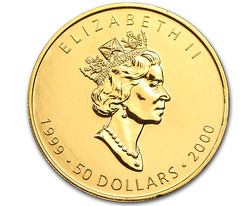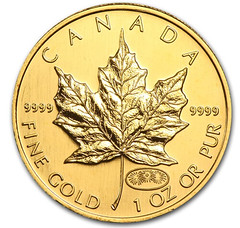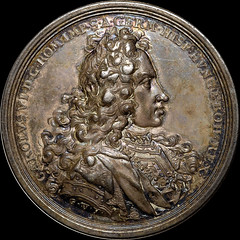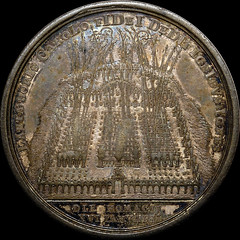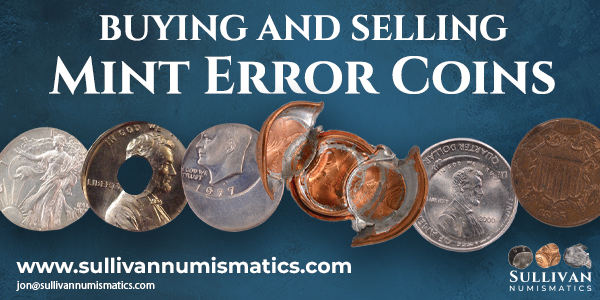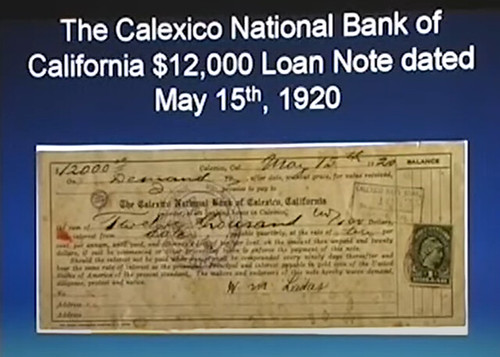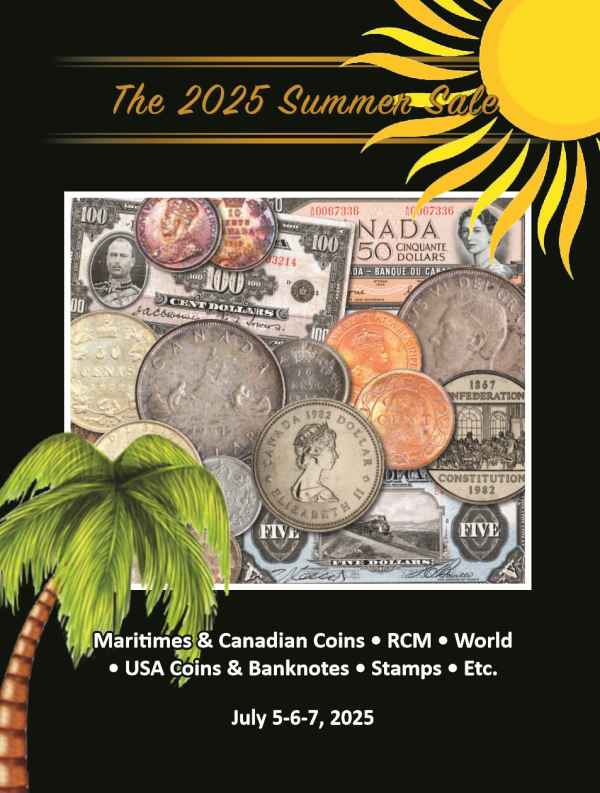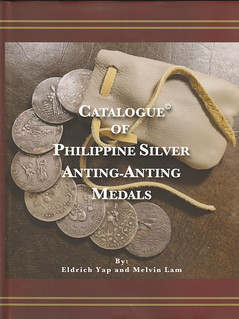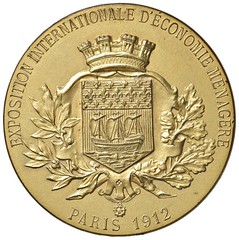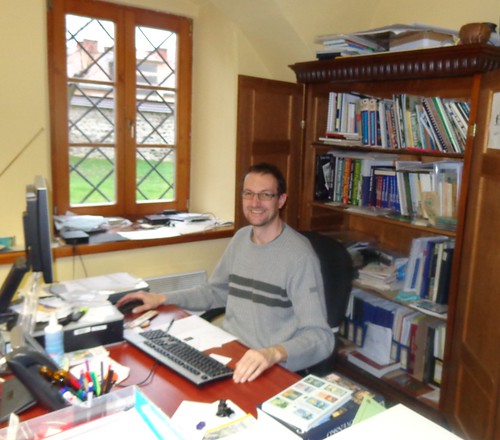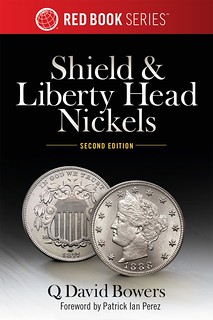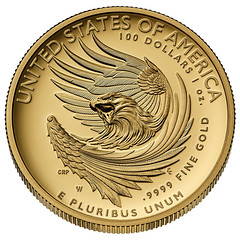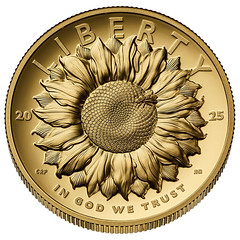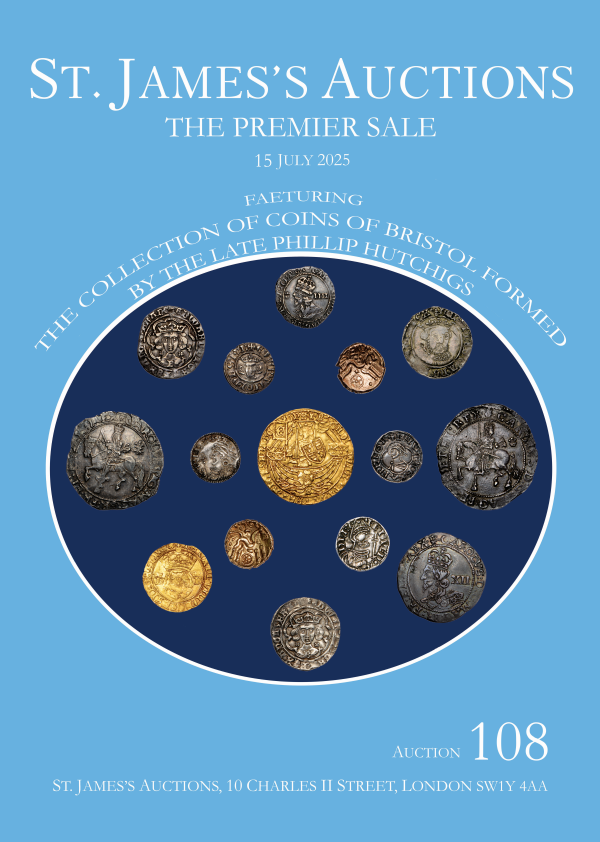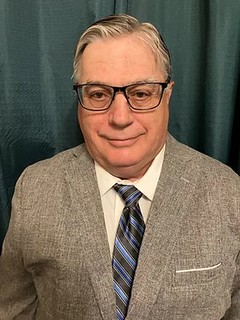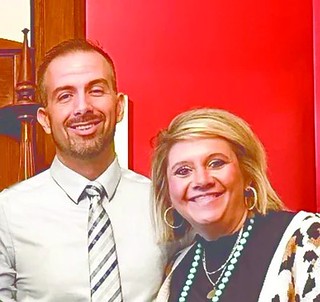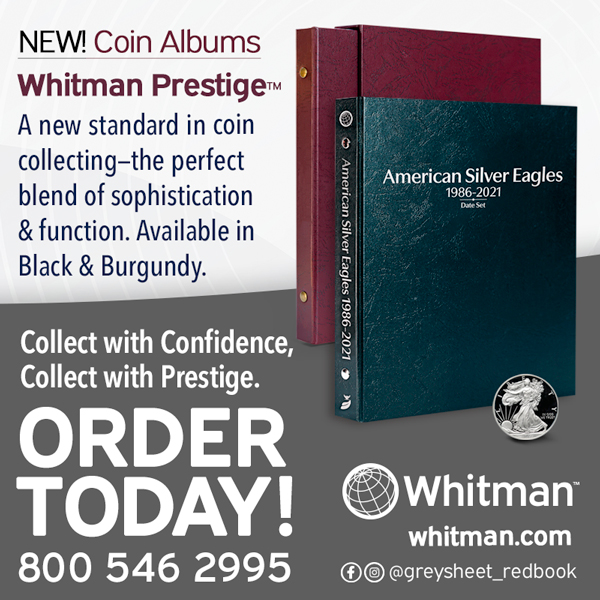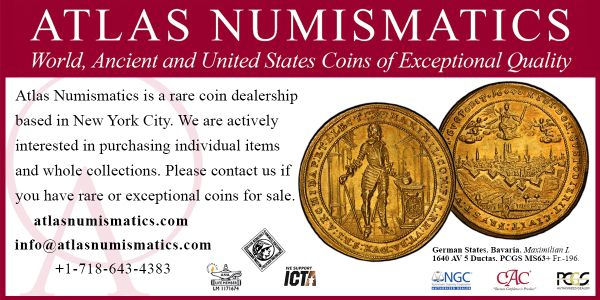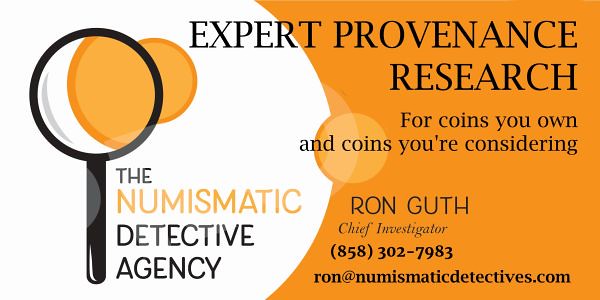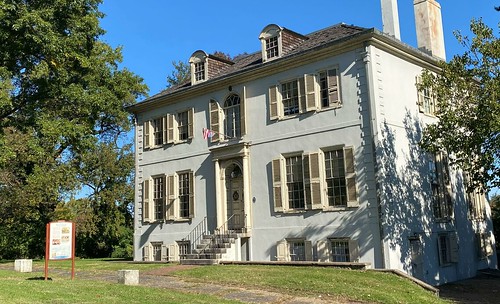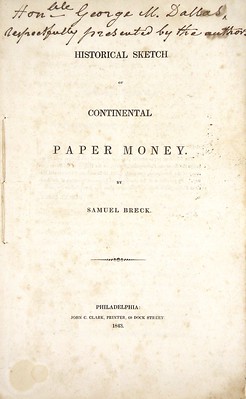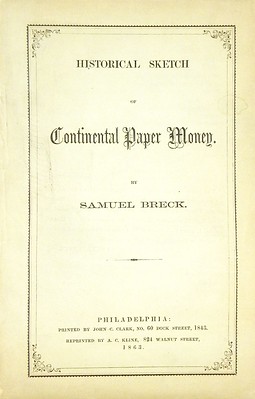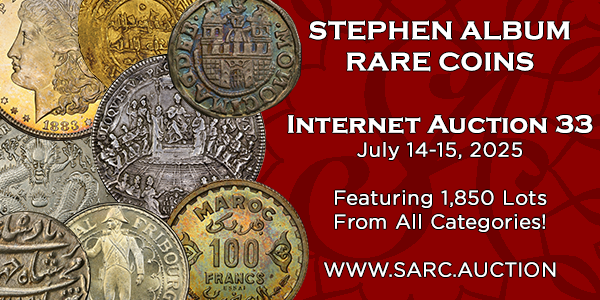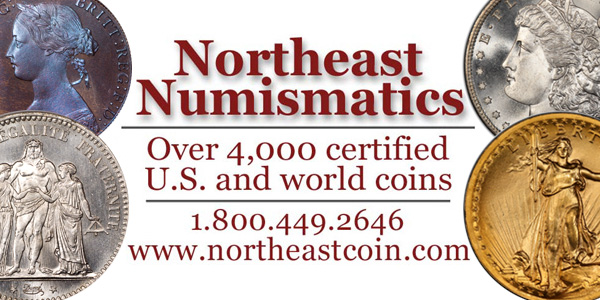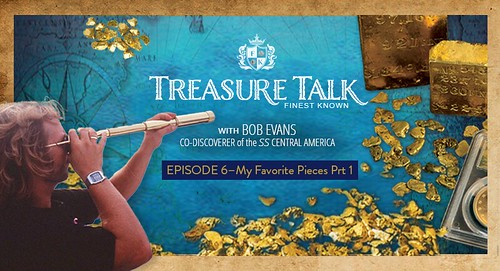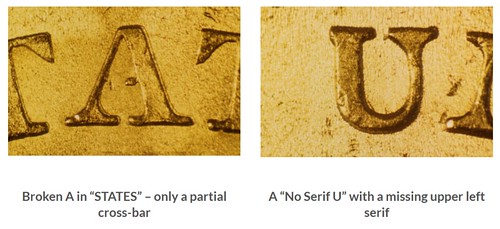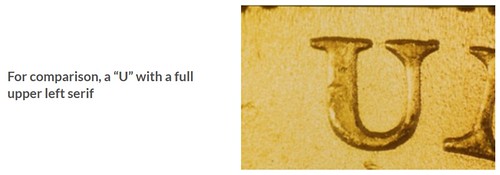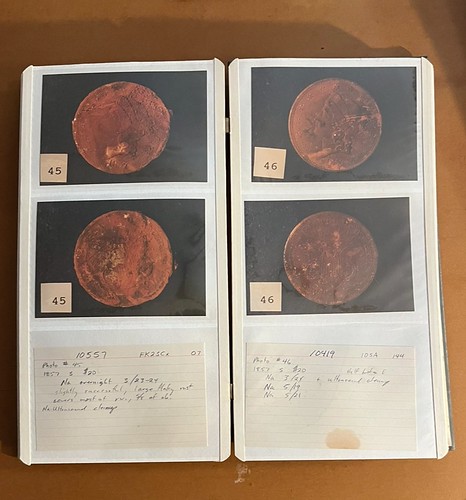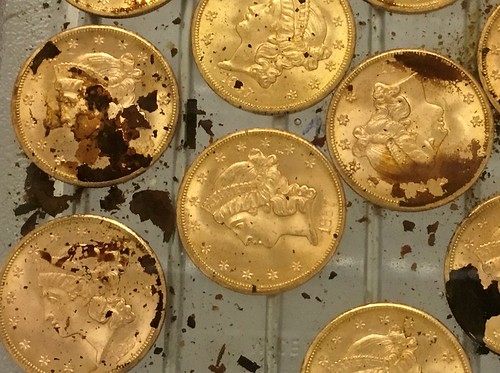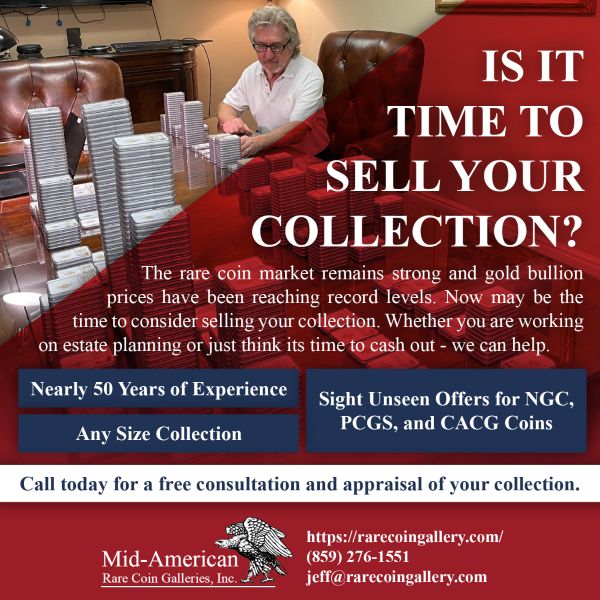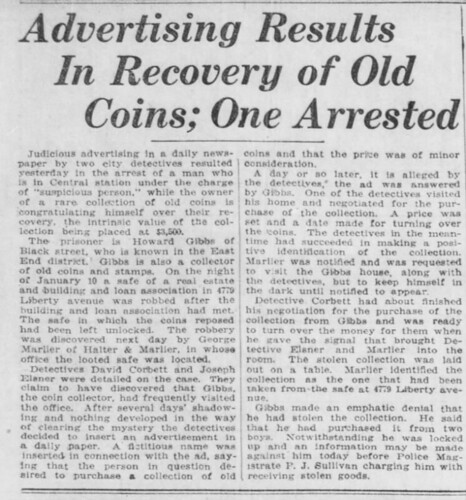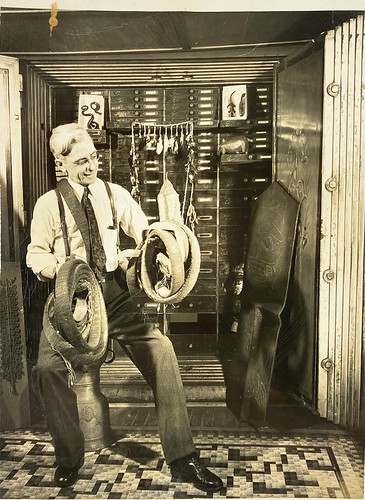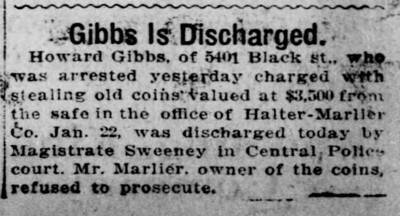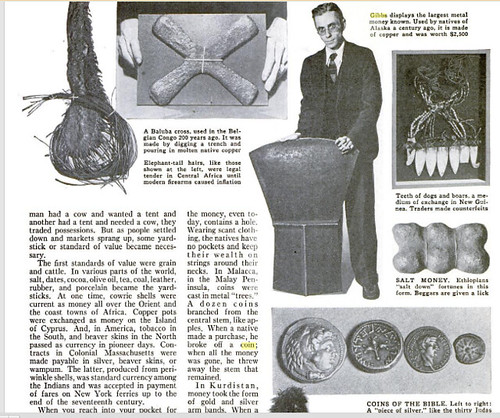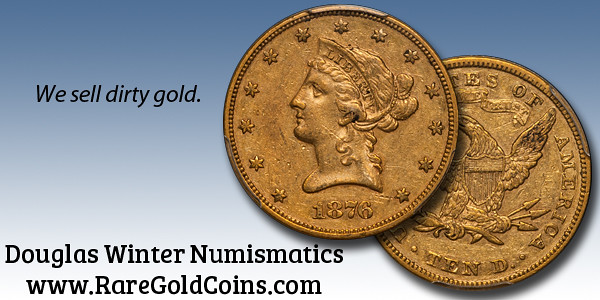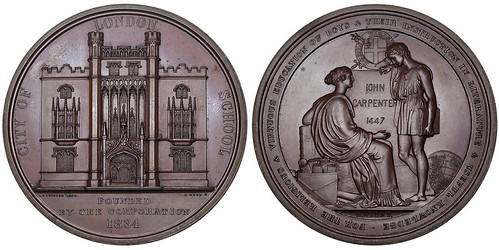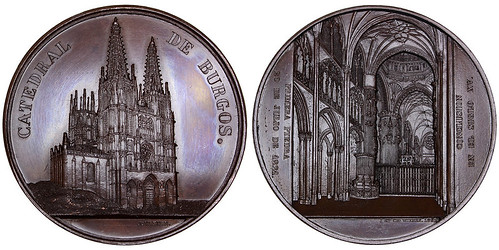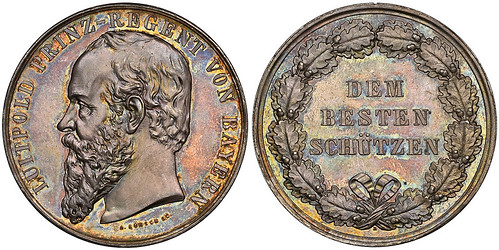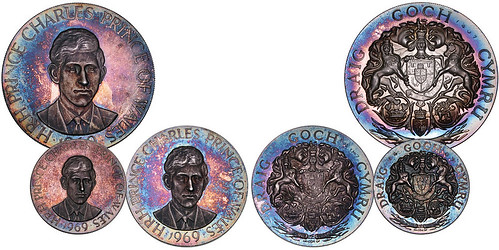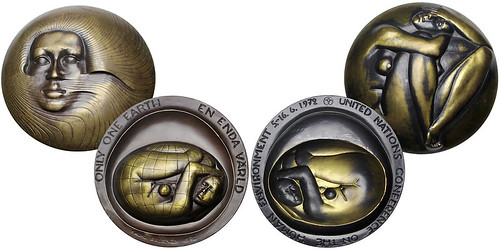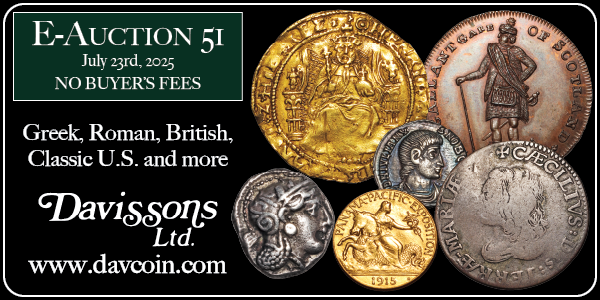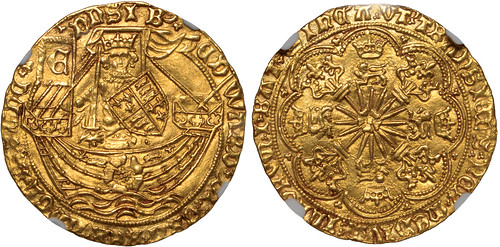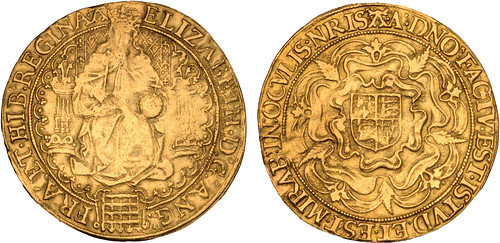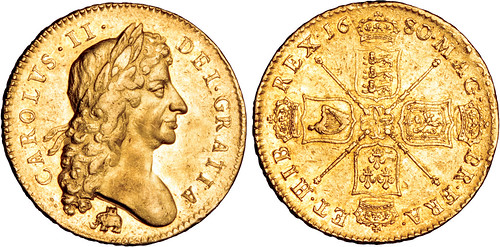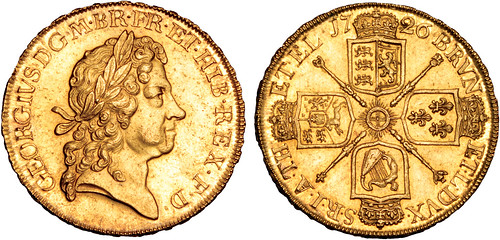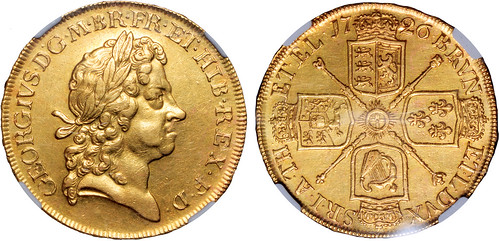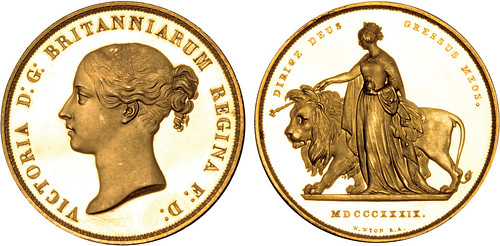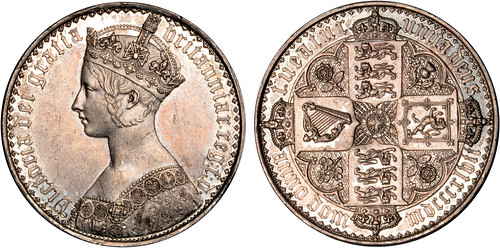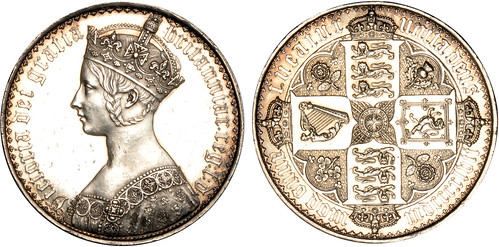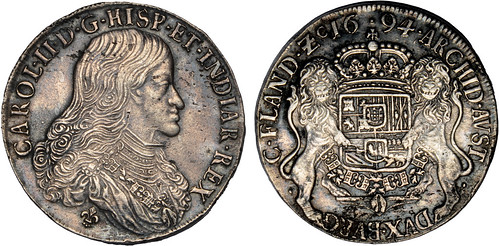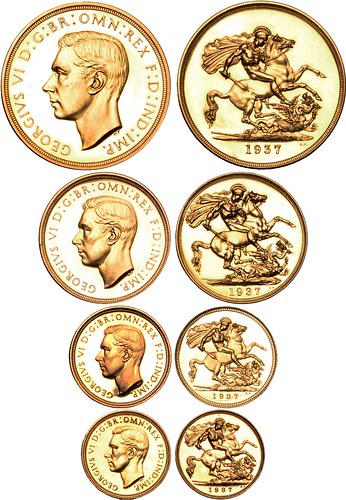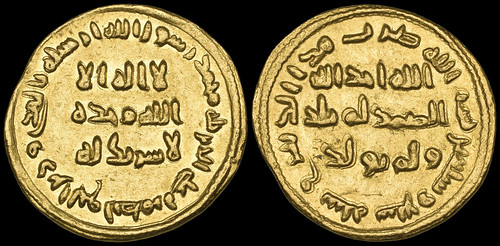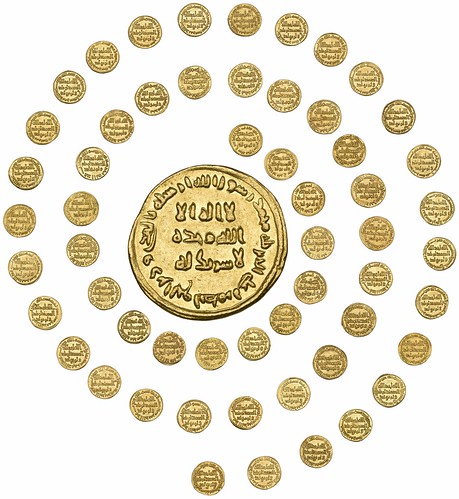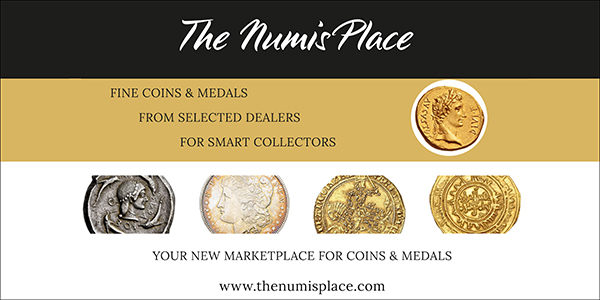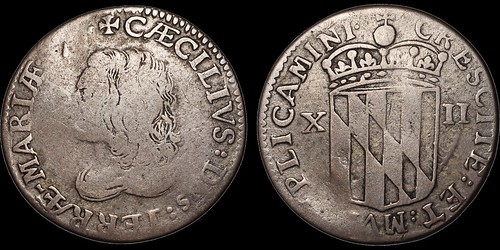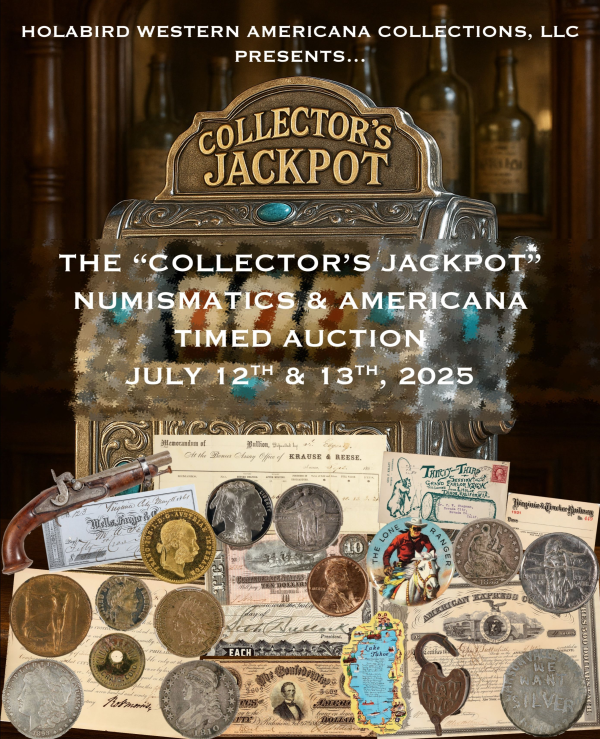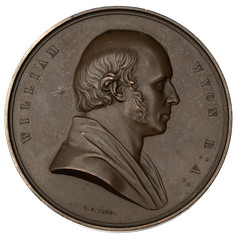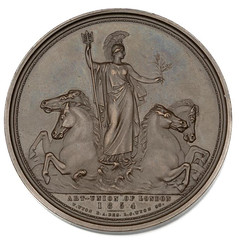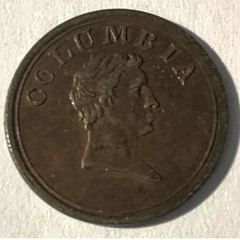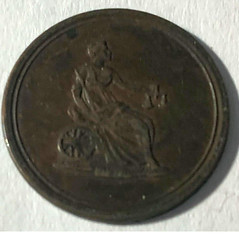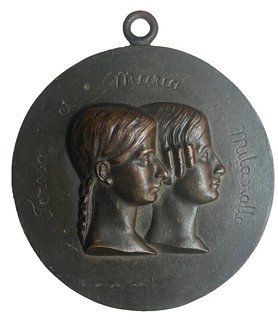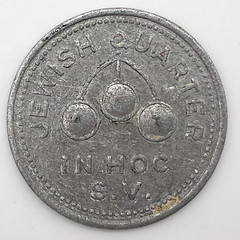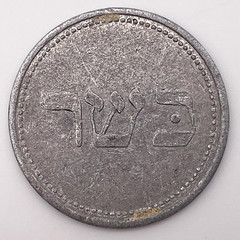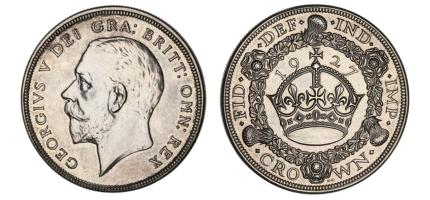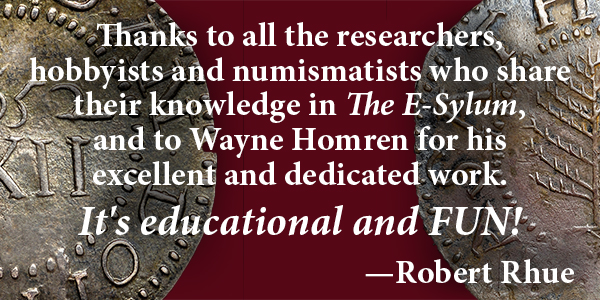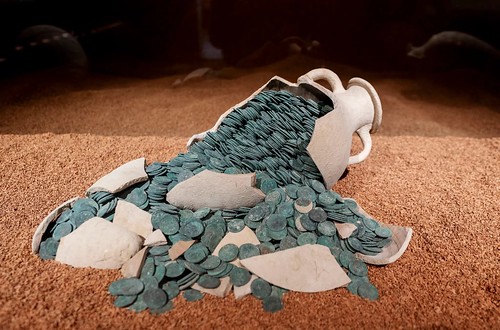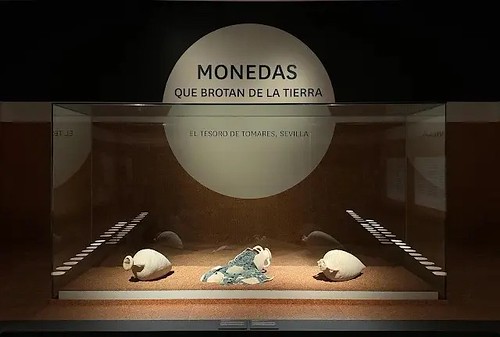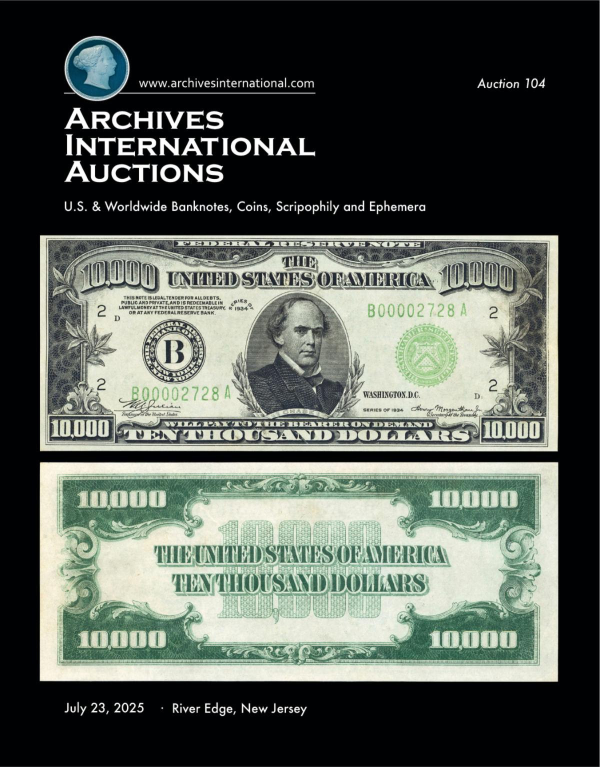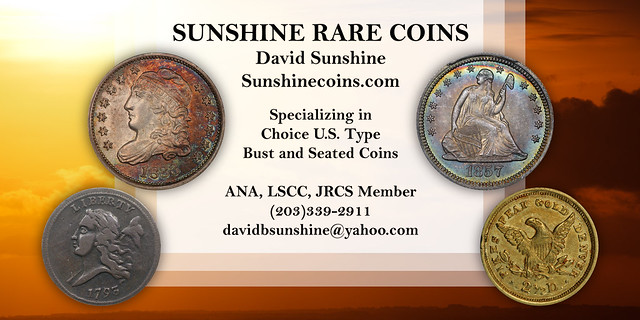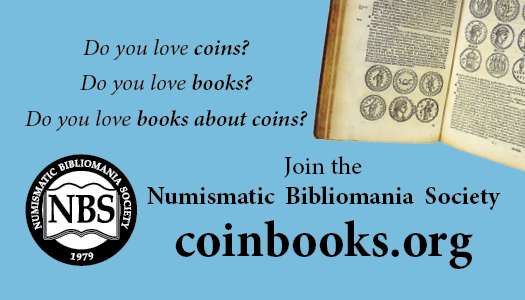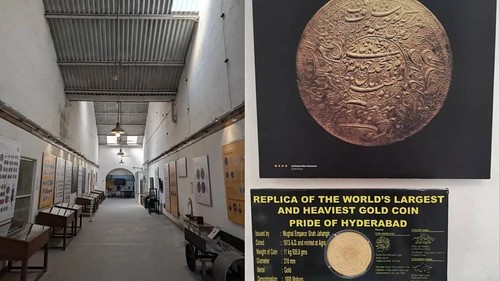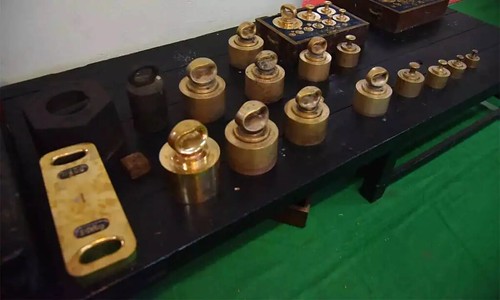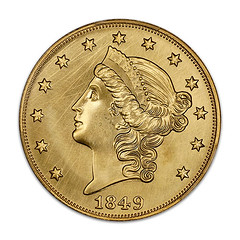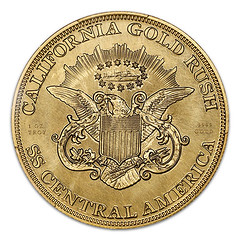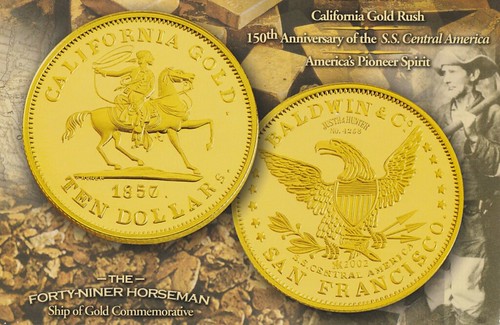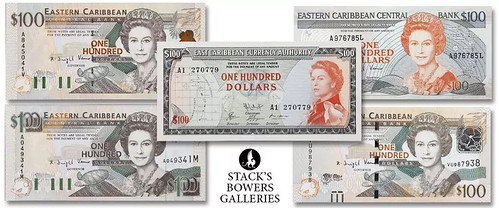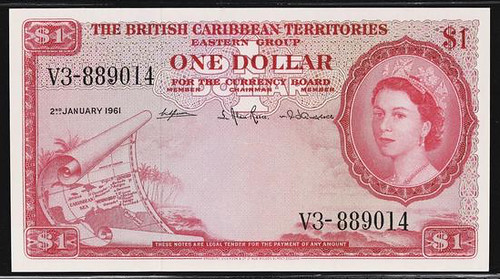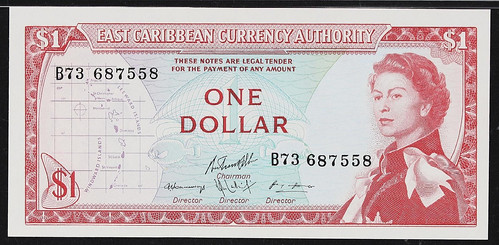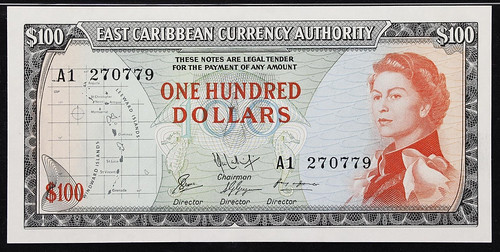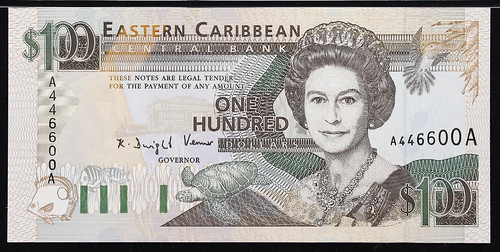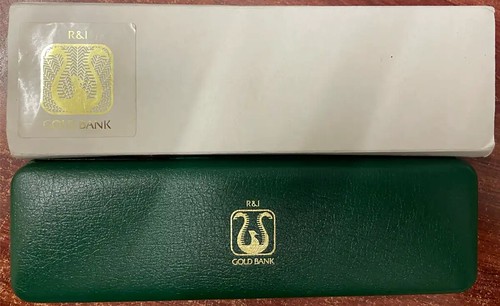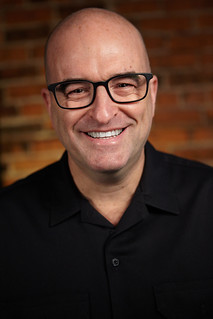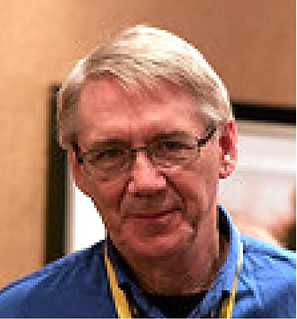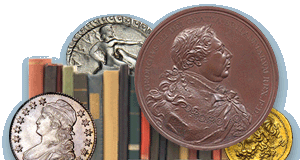
Visit our NBS Sponsors
About UsThe Numismatic Bibliomania Society is a non-profit association devoted to the study and enjoyment of numismatic literature. For more information please see our web site at coinbooks.org SubscriptionsThose wishing to become new E-Sylum subscribers (or wishing to Unsubscribe) can go to the following web page link MembershipThere is a membership application available on the web site Membership Application To join, print the application and return it with your check to the address printed on the application. Print/Digital membership is $40 to addresses in the U.S., and $60 elsewhere. A digital-only membership is available for $25. For those without web access, write to: Jeff Dickerson, Treasurer AsylumFor Asylum mailing address changes and other membership questions, contact Jeff at this email address: treasurer@coinbooks.org SubmissionsTo submit items for publication in The E-Sylum, write to the Editor at this address: whomren@gmail.com BUY THE BOOK BEFORE THE COINSale Calendar
|
- WAYNE'S WORDS: THE E-SYLUM JULY 6, 2025
- NEW BOOK: NUMISMATIC HISTORY OF BARIKOT
- NEW BOOK: SIAM SPECIMEN BANKNOTES THIRD SERIES
- 2025 SHEKEL PRIZE ANNOUNCED
- NEW BOOK: JEWRY REFLECTED, REFRACTED AND RECORDED
- HAPPY BIRTHDAY, GENE HESSLER
- AN AMERICAN MEDAL DEPICTING FIREWORKS?
- VIDEO: SOUTHERN CALIFORNIA NATIONAL BANK NOTES
- NOTES FROM E-SYLUM READERS: JULY 6, 2025
- ANA CONTRIBUTORS RECOGNIZED AT 2025 WFOM
- VOCABULARY TERM: CAMEOGRAPH
- SAMUEL BRECK (1771-1862)
- THE FRIEDBERGS' DEPARTMENT STORE COIN SHOPS
- TREASURE TALK WITH BOB EVANS, EPISODE 6.1
- HOWARD GIBBS COIN ROBBERY ARREST
- NUMISMAGRAM MEDAL SELECTIONS: JULY 6, 2025
- ST. JAMES'S AUCTIONS JULY 2025 SALE
- COMPLETE SET OF UMAYYAD GOLD DINARS
- DAVISSONS E-AUCTION 51
- NUMISMATIC NUGGETS: JULY 6, 2025
- SPANISH MUSEUM DISPLAYS 50,000 COIN HOARD
- EXPLORING THE COINS OF CHARLEMAGNE
- 2026 SEMIQUINCENTENNIAL COINAGE
- HYDERABAD HOTEL TOKENS
- THE SAIFABAD MINT MUSEUM
- 1849 $20 CENTRAL AMERICA COMMEMORATIVE
- EAST CARIBBEAN STATES CURRENCY
- LOOSE CHANGE: JULY 6, 2025
- FEATURED WEBSITE: HISTORICAL MEDAL SOCIETY
- ABOUT THIS ISSUE: JULY 6, 2025
Content presented in The E-Sylum is not necessarily researched or independently fact-checked, and views expressed do not necessarily represent those of the Numismatic Bibliomania Society.
WAYNE'S WORDS: THE E-SYLUM JULY 6, 2025
 New subscribers this week include:
Ethan Koerner,
Welcome aboard! We now have 7,247 subscribers.
New subscribers this week include:
Ethan Koerner,
Welcome aboard! We now have 7,247 subscribers.
Thank you for reading The E-Sylum. If you enjoy it, please send me the email addresses of friends you think may enjoy it as well and I'll send them a subscription. Contact me at whomren@gmail.com anytime regarding your subscription, or questions, comments or suggestions about our content.
Happy birthday to author and researcher Gene Hessler, who turned 97 today!
This week we open with three new books, the Shekel Prize, updates from the Newman Numismatic Portal, notes from readers, and more.
Other topics this week include cameographs, Samuel Breck, Howard Gibbs, Robert Friedberg, department store coin shops, fixed price and auction offerings, gold dinars, the coins of Charlemagne, Hyderabad hotel tokens, East Caribbean States currency, and the Historical Medal Society.
To learn more about the finds from Barikot, Siam Specimen Banknotes, the 250th Anniversary of Jewish Settlement in America, Founding Father John Adams, Southern California National Bank Notes, the 2025 American Liberty High Relief Gold Coin, varieties of 1857-S double eagles, the Cathedral of St. Maria, Gothic crowns and florins, the Lord Baltimore shilling, the Saifabad Mint Museum, the Calexico National Bank of California, and Philippine Anting Anting medals, read on. Have a great week, everyone!
Wayne Homren
Editor, The E-Sylum
NEW BOOK: NUMISMATIC HISTORY OF BARIKOT
The July 2025 emailing from the American Numismatic Society announced their library's acquisition of a new book on the numismatic history of Barikot. -Editor
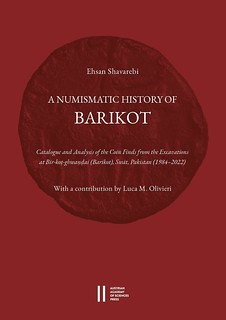 A numismatic history of Barikot : catalogue and analysis of the coin finds from the excavations at Bir-kot-ghwandai (Barikot),
A numismatic history of Barikot : catalogue and analysis of the coin finds from the excavations at Bir-kot-ghwandai (Barikot),
Swat, Pakistan (1984-2022) Ehsan Shavarebi ; with a contribution by Luca M. Olivieri ; edited by Michael Alram and Abdul Samad.
Publisher:Vienna, Austria : Austrian Academy of Sciences Press, [2025]
Description:469 pages : color illustrations, charts, maps, plans ; 30 cm.
ISBN:9783700195511.
Here's the book description from Amazon. -Editor
The present volume explores the coins unearthed during the excavations at the ancient city of Barikot (Swat Valley, northern Pakistan) between 1984 and 2022. The excavations of the Italian Archaeological Mission at Barikot have revealed numerous settlement phases from the prehistoric to the Islamic times. Of particular significance are over 500 coin finds, which are placed in their historical context in this volume to draw a clear picture of the monetary circulation in the Swat Valley (Uddiyana) throughout antiquity and the early Islamic period.
The chronological framework of the coin finds spans from the third century BCE to the twelfth century CE, i.e., from the Indian Maurya dynasty to the Ghaznavids. The majority of the coin finds are from the Kuan period (first to fourth century CE). Various historical, typological, metrological, and topographical aspects of the coinage and monetary circulation of each period are addressed in separate chapters.
The finds from Barikot are also compared with those from other documented sites in Uddiyana, Gandhara, and adjacent regions in the Indo-Iranian borderlands. What should be highlighted is the stratigraphic documentation of the find contexts, which, based on the radiocarbon analyses, makes it possible to bring the coins into relation with other types of archaeological artifacts. This subject is discussed in an archaeological contribution by the director of the excavations, Luca M. Olivieri.
For more information, or to order, see:
A Numismatic History of Barikot: Catalogue and Analysis of the Coin Finds from the Excavations at Bir-ko?-ghwa??ai (Barikot), Swat, ... (Veroffentlichungen Zur Numismatik, 69)
(https://www.amazon.com/Numismatic-History-Barikot-Bir-ko%E1%B9%AD-ghwa%E1%B9%87%E1%B8%8Dai-Veroffentlichungen/dp/3700195516)
To read the library catalog listing, see:
A numismatic history of Barikot : catalogue and analysis of the coin finds from the excavations at Bir-kot-ghwandai (Barikot), Swat, Pakistan (1984-2022) Ehsan Shavarebi ; with a contribution by Luca M. Olivieri ; edited by Michael Alram and Abdul Samad.
(https://donum.numismatics.org/cgi-bin/koha/opac-detail.pl?biblionumber=224493)
NEW BOOK: SIAM SPECIMEN BANKNOTES THIRD SERIES
Jan Olav Aaamlid's new book Siam Specimen Banknotes Third Series is available for preorder. Here's information from the publisher's site. -Garrett
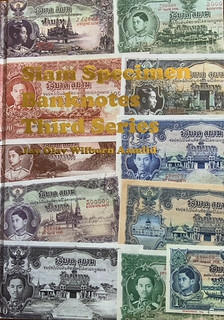 Siam Specimen Banknotes Third Series
Siam Specimen Banknotes Third Series
By: Jan Olav Aaamlid
The history of Thailand during this time is very interesting. There was a coup in 1932 and the King, Prajadhipok, Rama VII, abdicated in England in 1935. Thailand got a new King, at the time living in Switzerland - King Ananda, Rama VIII. During this short period (only about six years) Thailand had four different Ministers of Finance, and their titles changed several times - this all reflects on the banknotes, which also had to be changed accordingly.
After Rama VII abdicated, the printer Thomas de la Rue & Company Ltd in London was instructed to ante-date the banknotes prior to his abdication. At that time it was a lengthy process to make a new banknote, so the Ministry of Finance decided only to change the portrait of the King, which would take 6 to 8 weeks. After the portrait was engraved, an additional 6 weeks would be required to incorporate the engraving into the banknote die and manufacture the new printing dies.
This book should be interesting for anyone collecting Thai banknotes, those interested in Thai history and the production of banknotes in general.
Hardback, with slipcase and colour illustrations throughout.
A4, 176 pages
For more information, or to order, see:
Siam Specimen Banknotes Third Series
(https://spinkbooks.com/products/siam-specimen-banknotes-third-series)
2025 SHEKEL PRIZE ANNOUNCED
The Shekel Prize is awarded annually to the best book published on the topic of ancient Judaean coins, coins of the Holy Land or Judaic numismatics. Here's the announcement of the 2025 winner. -Editor
Ira Rezak's prize-winning book Jewry Reflected, Refracted and Recorded on Medals
is based on an exhibition of his material at New York's Center for Jewish History.
The phrase "Jewry reflected, refracted, and recorded in medals" is a compelling description of the way Jewish history, culture, and experience are represented and preserved through the art and craft of medals
Reflected: Medals, tokens and Badges have been used for centuries by Jewish artists to reflect the actuality of Jewish individual and communal existence. A Jewish Mother
by Boris Schatz offers a reflection upon Jewish values, presenting a mother in the act of tenderly raising her young child, both literally and figuratively, to be concerned for the welfare of others in the Jewish Community, to perform the biblically commanded mitzvah of charity.
Refracted: Medals are often used to honor or reward individuals who have excelled in some activity that brings credit to the Jewish people. Over their long history Jews have had to adapt themselves individually and communally as they engage with society in changing circumstances which has inevitably necessitated change, refraction of direction and method. After nearly two millennia the Jewish re-settlement of the Holy Land required new adaptations to older ways of life. The 1932 prize medal designed by Moses Murro for the Levant Fair in Tel Aviv presented such change by inventing a new iconographic logo, the flying camel, a modern version of an ancient Jewish mode of passage.
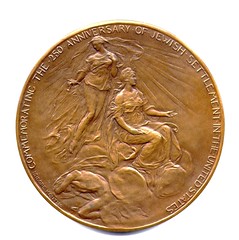
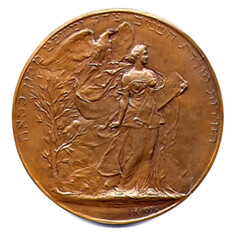
Medal celebrating the 250th Anniversary of Jewish Settlement in America.
Designed by Isidor Konti. Bronze, 76mm. Issued in 1905.
Recorded: Commemoration, establishing a material record of past events and present achievements is perhaps the most common function of medallic art. Jewry, the Jewish people, have had much in their past to reflect upon, and fortunately also attainments worthy of celebration. The medal by Isidore Konti celebrating the 250th anniversary of the arrival of Jews in America records this event in a classical Beaux-Arts style. Liberty and Justice triumph over Intolerance on one side, while on the other a figure of History has inscribed on a tablet the dates 1655 and 1905 under the protection of an American eagle.
The website of the Center for Jewish History indicates the following:
This exhibition presents artifacts that were a part of Jewish lives, have survived, and have a story to tell. Coins, medals, and related items, like books and prints, are replicated and disseminated to achieve a wide distribution. Coins are exclusively the prerogative of sovereign governments, so their imitative successors—medals, tokens, and badges—retain an aura of authority.
Coins are an official means of monetary exchange. Tokens circulate as coin-like objects issued by local entities—towns, communities, institutions, even private merchants—so their circulation is only valid regionally. Medals resemble coins, but need not be small and are textually and pictorially free to present a wider range of subject matter. Medallic sponsors may be communal, institutional, commercial, even individual. Medals often function as rewards for personal achievement—military, academic, communal, scholastic, athletic—or to commemorate dedications, or religious and other noteworthy occasions. Medals honor both the living and the dead and may serve as proof of personal participation in group events or as souvenirs of private experiences. Insignia, worn externally, serve to indicate and project status and affiliation. Amulets worn individually offer protection, displaying biblical texts and images.
Except for a very brief period two thousand years ago, until the foundation of Israel in 1948 there were no Jewish national governments and consequently no official Jewish coins. But medals, tokens, insignia and amulets have been used extensively by Jews for centuries.
The Shekel Prize has been awarded annually since 2017 to the author of the best book published on the subject of Ancient Judaean, Holy Land, Israel, or Jewish Numismatics. Ira Rezak is a retired physician and educator who has studied and collected Judaica for many years. An Emeritus Professor at Stony Brook University, he serves as president of the Harry G. Friedman Society and is a board member of the American Israel Numismatic Association.
NEW BOOK: JEWRY REFLECTED, REFRACTED AND RECORDED
We haven't covered this book before, so here's more information. The catalog was a limited edition and was only sold at the Center for Jewish History. I was unable to find it online, so it may be sold out. However, it's also readily accessible on-line at the academia.edu website. Here's an excerpt and some sample pages. -Editor
curated by Ira Rezak
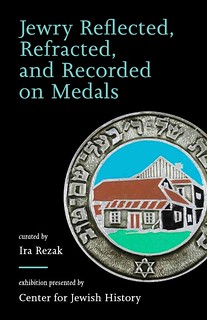 The curatorial question, for the collector as well as for the museologist, is
how to distinguish, characterize, and organize Jewish medals and their kindred
forms. Earlier definitions and categorizations tended to be strict, requiring
selected items to have been made by Jews or to feature explicitly Jewish content.
Even when adopting such seemingly precise criteria, however, there remain
challenging questions of how actually to define the terms Jew and Jewish and
thus how ultimately to limit what fits and what to select within these categories.
Such questions have been much debated subjects about which reasonable
persons will differ; the present introductory essay is not the place to resolve such
questions. Suffice it here to say that the modern museological tendency, and the
choices made by this observer for this exhibition, favor a generous approach,
inclusive of items that may not meet the strictest of definitions, but which
offer evidence for contextualizing and thus understanding Jewish history in
the broadest sense. As an example, with respect to text, the presence of Hebrew
might have seemed to prove Jewish origin irrespective of the author, while
with respect to imagery the mere presence of Jesus might be seen automatically
to disqualify a specimen. However, Hebrew in Christian context surely shows
significant Jewish influence, if not immediate presence, and the use of Hebrew
texts in connection with Christian images once again provides evidence of the
historical linkage between the two biblical religions.
The curatorial question, for the collector as well as for the museologist, is
how to distinguish, characterize, and organize Jewish medals and their kindred
forms. Earlier definitions and categorizations tended to be strict, requiring
selected items to have been made by Jews or to feature explicitly Jewish content.
Even when adopting such seemingly precise criteria, however, there remain
challenging questions of how actually to define the terms Jew and Jewish and
thus how ultimately to limit what fits and what to select within these categories.
Such questions have been much debated subjects about which reasonable
persons will differ; the present introductory essay is not the place to resolve such
questions. Suffice it here to say that the modern museological tendency, and the
choices made by this observer for this exhibition, favor a generous approach,
inclusive of items that may not meet the strictest of definitions, but which
offer evidence for contextualizing and thus understanding Jewish history in
the broadest sense. As an example, with respect to text, the presence of Hebrew
might have seemed to prove Jewish origin irrespective of the author, while
with respect to imagery the mere presence of Jesus might be seen automatically
to disqualify a specimen. However, Hebrew in Christian context surely shows
significant Jewish influence, if not immediate presence, and the use of Hebrew
texts in connection with Christian images once again provides evidence of the
historical linkage between the two biblical religions.
The observer of the materials contained in the present exhibition can therefore find a remarkably wide range of numismatic evidence for Jewish history both among Jews and of their interactive presence within surrounding societies. These artifacts reflect, refract, and record Jewish experience, but in addition they were often also active participants in that history, agents that facilitated actual functions of Jewish communal life and have survived to provide some tangible connection for us to Jewry's past. Jews are known as Shearit Hapletah, a small group, survivors of much adversity, but they are also the progenitors of the Abrahamic religions which have flourished throughout Europe and Western Asia The coins and medals that emerged and survived in these places still retain the impression made by Jews upon society throughout their history.
To read the complete book, see:
Jewry Reflected, Refracted and Recorded on Medals
(https://www.academia.edu/129879055/Jewry_Reflected_Refracted
_and_Recorded_on_Medals)
HAPPY BIRTHDAY, GENE HESSLER
Happy 97th birthday to numismatic researcher, author and curator Gene Hessler! See Pete Smith's earlier article for Gene's bio. Here's a gallery of photos to celebrate the day. -Editor
To read the earlier E-Sylum article, see:
GENE HESSLER TURNS 95
(https://www.coinbooks.org/v26/esylum_v26n30a19.html)
AN AMERICAN MEDAL DEPICTING FIREWORKS?
On this Fourth of July weekend in the U.S., Newman Numismatic Portal Project Coordinator Len Augsburger has a question for readers. -Editor
Is There An American Medal Depicting Fireworks?
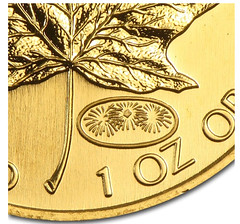 The tradition of displaying fireworks on Independence Day, July 4th, is a long-standing one, dating back to the very first organized celebrations of the holiday in 1777. Founding Father John Adams foresaw such commemorations from the very beginning, writing to his wife Abigail on July 3, 1776
The tradition of displaying fireworks on Independence Day, July 4th, is a long-standing one, dating back to the very first organized celebrations of the holiday in 1777. Founding Father John Adams foresaw such commemorations from the very beginning, writing to his wife Abigail on July 3, 1776 I am apt to believe that it will be celebrated, by succeeding Generations, as the great anniversary Festival. It ought to be commemorated, as the Day of Deliverance by solemn Acts of Devotion to God Almighty. It ought to be solemnized with Pomp and Parade, with Shews, Games, Sports, Guns, Bells, Bonfires and Illuminations from one End of this Continent to the other from this Time forward forever more.
All this made us wonder if there is an American medal depicting fireworks. Newman Portal does not reveal such an example, through ironically our neighbors to the north placed a fireworks privy mark on the 1999-2000 Canadian Maple Leaf gold coins. The pieces were given a double date, with the privy mark denoting the new millennium.
The only other relevant mention we found was a 1712 Charles VI medal, from Nurnberg, whch depicts a fireworks display in honor of Charles VI on January 16, 1712. This example is ex. Newman III (Heritage Auctions, January 2014), lot 30555, where it realized $4,700.
Our community shoots off fireworks on July 5th as a way of saving money and spreading the burden on local law enforcement and first responders. July 5th is also our wedding anniversary, so it makes for a nice annual tradition. Good display and crowd this year, just a short walk from our house. -Editor
Link to fireworks
search results on Newman Portal:
https://nnp.wustl.edu/library/searchwithterms?searchterm=fireworks
VIDEO: SOUTHERN CALIFORNIA NATIONAL BANK NOTES
The David Lisot Video Library on the Newman Numismatic Portal can be found at:
https://nnp.wustl.edu/library/multimediadetail/522852
We highlight one of his videos each week in The E-Sylum. Here's one from 2009 with Andrew Woodruff speaking about Southern California National Bank Notes. -Editor
A look at national bank note issues from Los Angeles county and southward to Orange, Imperial and San Diego counties. In essence, this is a walking tour of Southern California through its National Bank Notes. Andrew Woodruff is a paper money expert, decorated exhibitor and published author.
Speaker: Andrew Woodruff. From the 1990 ANA convention.
To watch the complete video, see:
Southern California National Bank Notes
(https://youtu.be/hm6a16RkMZc)
Southern California National Bank Notes
(https://nnp.wustl.edu/library/book/557338)
NOTES FROM E-SYLUM READERS: JULY 6, 2025
More on Philippines Anting-Anting Medals
"Salamat Po! (Tagalog for Thank you, Sir!
) Anting-anting medals have enjoyed more publicity and numismatic chatter in the past two years than in the twenty years preceding. Interesting bits of Filipino Catholic culture. "
"Anting-anting Medals have been known among collectors of Philippine numismatics for many many years. A book about these medals was published in 2018 in the Philippines. There were only 100 copies printed."
Thanks, everyone! Here's more about the book from a recent auction listing. -Editor
Catalogue of Philippine Silver Anting Anting Medals Book. The Catalogue of Philippine Silver Anting-Anting Medals by Eldrich Yap and Melvin Lam is a specialized reference book that catalogs various silver anting-anting (amulet) medals produced in the Philippines. These medals, often associated with spiritual beliefs and practices, have been collected and studied for their cultural and historical significance.
Content Overview: Medal Identification: The book provides detailed descriptions and classifications of different silver anting-anting medals, including their inscriptions, designs, and variations. Rarity and Value Assessment: It offers insights into the rarity of each medal type, aiding collectors in understanding their relative value within the collecting community. PCGS Reference: Notably, this catalogue is utilized by the Professional Coin Grading Service (PCGS) as a reference for slabbed catalog codes, indicating its recognized authority in the field.
To read the complete lot description, see:
Catalogue of Philippine Silver Anting Anting Medals Book by Eldrich Yap and Melvin Lam
(https://bid.moretonauctions.com/lots/view/5-1V22PK/catalogue-of-philippine-silver-anting-anting-medals-book-by-eldrich-yap-and-melvin-lam)
To read the earlier E-Sylum article, see:
NUMISMATIC NUGGETS: JUNE 29, 2025 : Philippines Anting-Anting Medal
(https://www.coinbooks.org/v28/esylum_v28n26a20.html)
Photo Caption Correction: Mike Ellis
"That's not the late Joe Rust with Ron Landis in the photo, but former ANA board member Mike Ellis."
Larry Lee writes:
"That is Mike Ellis in the background (a one time Gallery Mint Museum employee) not Joe Rust. Other notable people who worked at GMM for a while include Phil Bressett, Ken's son."
Duly noted. We'll correct our archive. Thanks, everyone. -Editor
To read the earlier E-Sylum article, see:
MORE ON RON LANDIS : At the 2004 ANA Summer Seminar
(https://www.coinbooks.org/v28/esylum_v28n26a08.html)
Inspired Genius, or Just Weird?
"Your question was: 'Is that obverse inspired genius, or just weird?' -Editor
"I suspect it is a mental health disaster waiting to happen, in a way, but as with much art, the very means to introduce ill logic is also the very handle by which one can object to the same.
"I think John Lennon did an album cover in later years about as twisted, but we knew he was on acid.
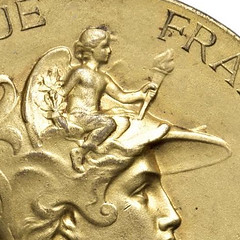 "The concept goes all the way back to The Iliad with the opening line "sing in me, muse". That's great if your muse is truly divine, but if your muse turns out to be a sourpuss, you might really start to wonder why people tolerate such intrusion, but, what intrusion? How would you describe it on the first day you had had enough? How could you be so bold as to risk being thought crazy just for the saying of such things? Indicating a medal such as this one with a complaint that "it's like this, but much less graceful" might accomplish the task."
"The concept goes all the way back to The Iliad with the opening line "sing in me, muse". That's great if your muse is truly divine, but if your muse turns out to be a sourpuss, you might really start to wonder why people tolerate such intrusion, but, what intrusion? How would you describe it on the first day you had had enough? How could you be so bold as to risk being thought crazy just for the saying of such things? Indicating a medal such as this one with a complaint that "it's like this, but much less graceful" might accomplish the task."
'scuse my muse... -Editor
To read the earlier E-Sylum article, see:
NUMISMATIC NUGGETS: JUNE 29, 2025 : 1912 France International Exhibition of Economics Medal
(https://www.coinbooks.org/v28/esylum_v28n26a20.html)
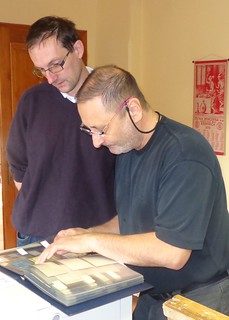 Martin Chmelik (1972-2025)
Martin Chmelik (1972-2025)
George Cuhaj writes:
"I am sad to report that Martin Chmelik (1972-2025) has died.
"Martin was the paper money curator at the Múzeum mincí a medailí Kremnica , Museum of Coins and Medals, which is under the stewardship of the National Bank of Slovakia.
"These photos are from when I was a participant in the 2013 Medallic Art Symposium. - Martin at his desk, and standing visiting with IBNS member (and author) Ludek Vostal."
Thank you. Sorry to hear this news. -Editor
Book update: Plantation tokens of British North Borneo
Adrian J. Lansen writes:
Dear friends, I am still looking for an image of the following tokens:
N.L.B.T.C.L Estate shop:
- 1 cent with on the reverse, on the right side (the Chinese word) the wavy sign with two points above.
Sandakan Tobacco Company Limited – Batuh Puteh estate:
- One dollar in tin/zinc/nickel.
- Ten cents copper.
- Five cents copper.
Sandakan Tobacco Company Limited:
- Ten cents copper with on the reverse in Chinese the (wrong) value of Twenty cents.
The Labuk Planting Company Limited:
- Twenty cents silver with KB on the reverse.
- One dollar silver.
Friendly regards from the Netherlands,
Adrian J. Lansen
Mail to: lansenkil@hotmail.nl or ajlansen@caiway.nl
Can anyone help? -Editor
Best Modern Books on Certain Coins?
Roger Burdette writes:
Please permit me to draw on reader experience with coin specialty books.
What are the best, most accurate numismatic books on:
- Half cents
- 2-cents
- 3-cents Nickel
- 3-cents Silver
- 5-cent shield nickels
- Half dimes
Someone wrote asking about these obsolete coin types, and I realized that I don't have a good grasp on the subject.
I'm looking for both high level, and detail books....Things that would appeal to someone who is interested in specializing, but wants both basic and historical information before they "dive in."
Great topic, and one we haven't discussed in a long time. The Whitman/Bowers series usually do a good job of summarizing what is known to date, but I don't think they covered all of these types. Bill Bierly published a detailed book on the creation of the cent piece, but that's only the historical side. One new one is the 2nd edition of Shield & Liberty Head Nickels.
I have older books on most of these coins on my shelves but I don't actively collect any of them and wouldn't be a good person to ask. What do our readers think? -Editor
2025 American Liberty High Relief Gold Coin
Wayne Pearson writes:
"This American Liberty 2025 Gold eagle is not bad. It's better than the eagle head on the official gold bullion."
Something different - I like it too. -Editor
To read the earlier E-Sylum article, see:
American Liberty 2025 High Relief Gold Coin
(https://www.usmint.gov/american-liberty-2025-high-relief-gold-coin-25DA.html)
ANA CONTRIBUTORS RECOGNIZED AT 2025 WFOM
The ANA will recognize the Outstanding Adult Advisor, Outstanding District Representative, and ANA Dealer of the Year at the 2025 World's Fair of Money in Oklahoma City. -Garrett
The American Numismatic Association (ANA) is recognizing leading role models in the numismatic community that have exhibited an influential, and positive presence. The Outstanding Adult Advisor and Outstanding District Representative will be awarded during the Oklahoma City World's Fair of Money® Member Awards and Donor Celebration, Thursday, August 21 from 3-4:30 p.m. in Ballroom A at the Oklahoma City Convention Center. The ANA Dealer of the Year will be awarded at the convention's 134th Anniversary Awards Banquet, Friday, August 22 from 7-10 p.m. at the Omni Oklahoma City Hotel.
David Cadenasso is the recipient of the ANA's 2025 Lawrence J. Gentile Sr. Memorial Award for Outstanding Adult Advisor. Cadenasso started bringing coins to the classroom several years ago, which inspired him to launch three wildly successful coin clubs for local elementary and middle schools in California. Last year, he created the nonprofit Central Cal Young Numismatists to unite the clubs. He regularly visits each group, hands out coins, secures guest speakers, and publishes a member newsletter.
Outstanding District Representatives Eric and Jennifer Kibbey of Indiana, now in their third year as ANA district representatives, have made a lasting impact on the hobby. Instrumental in the growth of the Richmond Coin and Currency Club, they've helped grow the club to over 100 members, launched a successful coin show, and created engaging youth programs. Jennifer edits the club newsletter, and together, the couple has recruited 23 ANA members. Through their dedication, teaching, and outreach, they inspire newcomers to discover the joy of the hobby.
 The 2025 Harry J. Forman Dealer of the Year is Don Bonser. The award recognizes a professional numismatist who shows uncommon dedication to strengthening the hobby and the ANA; exhibits high ethical standards and integrity; and is committed to treating customers fairly and consistently.
The 2025 Harry J. Forman Dealer of the Year is Don Bonser. The award recognizes a professional numismatist who shows uncommon dedication to strengthening the hobby and the ANA; exhibits high ethical standards and integrity; and is committed to treating customers fairly and consistently.
One of the best coin authenticators in the country, Bonser has handled more than $200 million in rare coins over the past three decades. He began his numismatic career as a grader at ANACS in 1989 and has served as a grader for Professional Coin Grading Service periodically for the last 20 years. Now an independent dealer, he resides in central Florida and operates Don Bonser Numismatics Ltd.
A longtime Summer Seminar instructor and error-coin specialist, Bonser mentors hundreds of young numismatists. He authored The Numismatist's "Collector's Edge" column for many years and received an honorary "Doctorate of Numismatics" in 2010. He has been recognized with several other ANA awards for his superior service and humble heart.
VOCABULARY TERM: CAMEOGRAPH
Here's another entry from Dick Johnson's Encyclopedia of Coin and Medal Terminology. -Editor
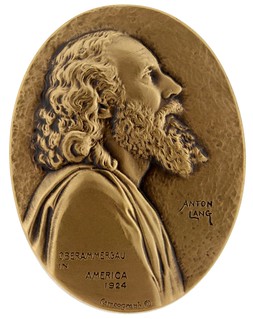
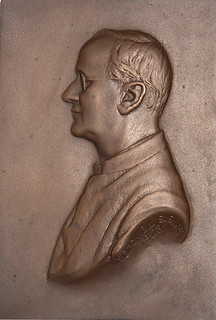
The lower right name on the oval medal (left) one might think would be the signature of the artist. It is not, it is the name of the actor shown on the medal in the role of Christ in the German passion play Oberammergan mentioned below. It is the only known medal made be the cameograph process in America. The New York studio had the 2-inch uniface medal struck by Medallic Art Company. The 4 5/8-inch medal on the right is one of several made in London for their studio established by the developer of the mechanical-photographic device. The Cameograph process was short lived because it could not equal that of live medallic artists.
Cameograph. Projecting an object with a grid or beams of light to reproduce it; often of a face to model a portrait in relief. The use of a Cameograph was thought by its developers to aid in making a portrait more lifelike. However, at its best it makes the subject appear more stiff or frozen, in effect accomplishing just the opposite. It falls short in perspective and animation by limiting the artist's ability to interpret and vivify his subject. The technique is called physiognotrace ("tracing the face").
The Cameograph was a photographic and mechanical refinement developed in 1921 by an Englishman, Henry M. Edmunds, and patented in 1921 and 1923. It was based on a 16th century device, the drawing frame, which employed a rectangular frame with wires creating a grid through which the artist viewed the subject. The Cameograph's feature was to photograph the subject illuminated by numerous vertical beams of light. Two photographs were taken, on each side of the subject (to be able to view any hidden line in a shadow to create the bas-relief image).
The photographs could be enlarged to any size. The operator traced the lines on the photos through a viewing microscope, controlling the milling of the cutter tool on the machine. It produced a relief of desired size in a media that could be easily cut (as plaster or wood). Today the use of the Cameograph would be considered unskillful (and perhaps amateurish). A medallist would prefer several photographic views from different angles instead, then interpret the subject or image.
Sporadic use of the Cameograph occurred with the establishment in London and New York of Cameograph studios for bas-relief and medallic productions. One of their creations in New York was a portrait of actor Anton Lang who portrayed Christ in the German passion play Oberammergau on a medal of 1924. The Cameograph did not succeed beyond these early productions.
SAMUEL BRECK (1771-1862)
E-Sylum Feature Writer and American Numismatic Biographies author Pete Smith submitted this article on early American numismatic author Samuel Breck. Thanks! -Editor
Joel J. Orosz contributes the Numismatic Bookie
column to Coin World. The June 16 issue
mentions an early numismatic writer, Samuel Breck. I think he is worthy of an article.
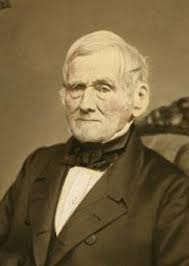 Samuel Breck was born in Boston on July 17, 1771. His father was Samuel Breck Sr. (1747-
1809) and mother was Hannah Andrews (1747-1830). The father was a prosperous Boston
merchant and one who made a profit during the Revolutionary War. He was a fiscal agent for the
Royal Army and Navy of France and after the war, a director of the Bank of the United States.
The family moved to Philadelphia in 1793.
Samuel Breck was born in Boston on July 17, 1771. His father was Samuel Breck Sr. (1747-
1809) and mother was Hannah Andrews (1747-1830). The father was a prosperous Boston
merchant and one who made a profit during the Revolutionary War. He was a fiscal agent for the
Royal Army and Navy of France and after the war, a director of the Bank of the United States.
The family moved to Philadelphia in 1793.
The Revolutionary War ended with the signing of the Treaty of Paris on September 3, 1783. At about that time, at age eleven, Samuel was sent to school in France. He attended the Royal Military School at Loreze, France, 1783 to 1787.
With $10,000 provided by his father in 1790, he established a shipping business as a merchant in Philadelphia.
Breck served as a corporal during the 1794 Whiskey Rebellion. He was married to Jane Ross (1773-1858) on December 24, 1795, and had a daughter Lucy (1807-1828).
In 1797 Breck commissioned construction of a home he called Sweetbriar
at 1 Sweetbriar
Lane in West Fairmount Park in Philadelphia. Originally it occupied a spacious 33-acre plot, a
gift from his father-in-law, John Ross. Breck wanted a place in the county away from the
seasonal yellow fever epidemics in Philadelphia. The Fairmount Dam was constructed downriver
in 1821. Breck was concerned about the health risks of stagnant water. His fears were confirmed
with the Typhoid death of his daughter at age twenty-one. The building has been remodeled
several times but remains standing in Fairmount Park.
He was elected to the Pennsylvania State Senate and served 1817 to 1821. He introduced a bill to abolish slavery in Pennsylvania. This was unpopular, failed to pass and probably quashed his chances for reelection.
Breck became president of the Schuylkill Bank in 1822.
He served in the United States House of Representatives from March 4, 1923, to March 3, 1825. He returned to the Pennsylvania Senate serving 1832 to 1834.
Breck was a prolific writer and speaker on local history. He compiled Historical Sketch of Continental Paper Money, published by John C. Clark in Philadelphia as part of The Transactions of the Historical and Literary Committee of the American Philosophical Society. Volume III, part 1 (1843).
This was the first numismatic article to be republished as a booklet. It was reprinted in 1863 by A. C. Kline and again in 1869 in Mason's Coins and Stamp Collector's Magazine.
The original was based on two essays read before the APS. The Kline reprint runs 33 pages with a one-page appendix. Mason's reprint was spread over issues from May 1869 to at least September of 1870. The serialization ended abruptly and before completion, The Mason reprint is too fragmented to be of much use.
Breck also contributed to our numismatic knowledge through his biographies. He published a
pamphlet Sketch of the Benevolent Services of the late Jacob G. Morris
and another A Short
Biography of Robert M. Patterson, M.D.
Breck's observations offer valuable insights into his era in America. Several titles of books and pamphlets by Breck are available as modern reprints on Amazon.
I have found no record that Breck collected coins or paper money. At that time, examples of Continental Currency would have been easy to obtain.
Breck kept diaries, lecture manuscripts. letters and travel logs. He wrote in the hope that these would be preserved and appreciated.
We love the offsprings of our speech and pen too well to let even the most trifling and
ephemeral of them encounter utter forgetfulness. If any good natured, patient relative, should
have the courage to run his eye over them, I hope he or she will think kindly of their author.
The Sanuel Breck papers are preserved at the Historical Society of Pennsylvania.
Breck had memberships in The American Philosophical Society (APS), The Historical Society of Philadelphia, The Library Company of Philadelphia and the Philadelphia Athenaeum.
He died at home on Arch Street in Philadelphia on August 31, 1862, and is buried in the family plot in Saint Peter's Episcopal Churchyard.
I am disturbed by the photo of Samuel Breck. He looks to me like someone else I have seen before with a different name. Does anyone else think he looks familiar?
I was fortunate to acquire both an original and reprint for my numismatic library. Both sold well in the Kolbe & Fanning Auction 168 offering of my collection. -Editor
Breck, Samuel. HISTORICAL SKETCH OF CONTINENTAL PAPER MONEY. Philadelphia: John C. Clark, Printer, 60 Dock Street, 1843. Offprinted from Transactions of the Historical and Literary Committee of the American Philosophical Society, Volume III, Part I (Philadelphia: Published by Carey and Hart, 1843). First edition. 8vo, self-covered and stitched. 40 pages. Inscribed "Honble. George M. Dallas, Respectfully presented by the author" in period ink at the head of the title. Folded; minor spotting. Very good. The very rare first edition, one of perhaps half a dozen in private hands.
A prominent citizen of Philadelphia, Breck (1771–1862) was the author of many historical addresses and dissertations. This essay on the paper currency of the Revolution is considered by the Dictionary of American Biography to be his most notable work.
Reissued in 1863 by the important early American coin collector A.C. Kline, it is one of the earliest American numismatic works to be reprinted. In his preface of his reprint, Kline states: "This pamphlet has now become of such rarity that its purchase is an utter impossibility, while at the same time an almost universal desire to obtain everything connected with the History of Continental Money, has caused considerable inquiry to be made for it." Only the sixth copy to come to market in the modern era: Ford didn't even own a copy. Not in Attinelli. Clain-Stefanelli 13292. Davis 135 (erroneously calling for two plates). Sigler 297. Ex Wayne Homren Library.
To read the complete lot descriptions, see:
Inscribed First Edition of Breck on Continental Paper
(https://bid.numislit.com/lots/view/1-7XX2W0/inscribed-first-edition-of-breck-on-continental-paper)
Kline Edition of Breck, ex Champa
(https://bid.numislit.com/lots/view/1-7XX2W2/kline-edition-of-breck-ex-champa)
THE FRIEDBERGS' DEPARTMENT STORE COIN SHOPS
Peter Tompa published a nice article on department store coin shops in Kate Fitz Gibbon's Cultural Property News, which covers national and international news affecting the art world, from in-depth research and reports on art and cultural policy to articles on museums, exhibits, the art market, media, education, technology, archeology, anthropology, and scientific discoveries.
We're publishing this excerpt with permission. You can subscribe to the free newsletter on the homepage at https://culturalpropertynews.org/ . -Editor
Art Friedberg grew up as part of perhaps the only family coin business operated out of major department stores. During college at George Washington University, he started working at his family's concession at Woodward and Lothrop in downtown Washington, DC. The operation sold a wide variety of US, foreign, and ancient coins as well as common ancient oil lamps and coins supplies not only at Woodies
in Washington, DC, but through franchises at other major department stores around the country.
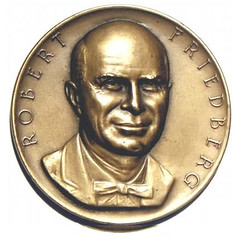 It all started with Art's dad, Robert. Robert's story is a bit unusual, but it broadly followed the trajectory of other self-starting American entrepreneurs of the early 20th century. Robert was born in Atlantic City, New Jersey, in 1912 to a family of Russian/Polish-Jewish immigrants. As a kid, he acquired his first foreign coins from sailors who visited his father's tailor shop located near the Harborside Terminal on the New Jersey side of the Hudson River. While at college in New York City, he founded Capitol Coin Company, a mail order coin business, with his 16-year old brother, Jack. During World War II, he served in the US Army in Europe, where he was able to acquire more inventory for his growing business.
It all started with Art's dad, Robert. Robert's story is a bit unusual, but it broadly followed the trajectory of other self-starting American entrepreneurs of the early 20th century. Robert was born in Atlantic City, New Jersey, in 1912 to a family of Russian/Polish-Jewish immigrants. As a kid, he acquired his first foreign coins from sailors who visited his father's tailor shop located near the Harborside Terminal on the New Jersey side of the Hudson River. While at college in New York City, he founded Capitol Coin Company, a mail order coin business, with his 16-year old brother, Jack. During World War II, he served in the US Army in Europe, where he was able to acquire more inventory for his growing business.
So how did coins join glassware, furniture, home appliances, clothing and shoes on department store shelves? Simply, selling coins was treated as selling other consumer goods, albeit as a specialized product that required the expertise of numismatists rather than typical department store employees. But it all only became a reality through Robert's business relationship with a well-known stamp dealer, Jacques Minkus, probably one of the first to bring collectibles, in the form of stamps, to department store counters.
Minkus was quite the promoter. Back in 1931, he had convinced Bernard Gimbel to allow him to open a small counter at the back of his flagship store at 33rd and Broadway to sell stamps. By the 1940s, Jacques had taken over much of the ground floor, and had expanded the operation to other department stores around the country.
Soon, Minkus decided to expand this empire further by promoting another popular collectible, coins. So, in 1947, he entered into a business relationship with Robert, who by that time had built up his own business. After a trial period, Robert ultimately agreed to pay Gimbels 20% gross on sales for use of its retail space, and also helped with the expansion to other stores. That business relationship took off with an expansion to 38 other department stores around the country.
Destiny also decreed that Capitol Coin would become a true family business as Robert also found love among collectibles. Soon after starting, he began a relationship with Minkus' assistant, Goldye Nessanbaum. Robert and Goldye got married in 1948, and soon had two sons, Ira and Art , who also ultimately joined the business along with Robert's brother, Jack.
Somehow Robert also found time to write and publish In addition to Capitol Coin Company, he formed the Coin and Currency Institute to publish books and sell coin supplies. His groundbreaking Gold Coins of the World was first published in 1958 and has been updated periodically since. Other books, including an important series on paper money, followed.
Robert knew relationships with other dealers were important to his own acceptance and success. As a result, Robert's firms became founding members of both the International Association of Professional Numismatists and the Professional Numismatists Guild. Art subsequently became the IAPN's President from 2001-2007.
Robert also knew that the key to the success of any franchise operation is a proper degree of control. For the franchise formula to work, coins purchased over the counter at stores nationwide were first sent to New York to be resorted before being distributed to other stores as needed. Capitol Coin Company also published price lists that could be overprinted with the name of the franchise stores. On occasion, rarities like the circulated 1894-S dime showed up for purchase over the counter. Such high priced coins tended to be resold outside normal channels because the typical department store buyer only purchased coins from $1 to $100 in value.
To read the complete article, see:
Careful Collector No. 35 – Days Gone By: When You Could Purchase US, Foreign, and Ancient Coins at Your Local Department Store
(https://culturalpropertynews.org/careful-collector-no-35-days-gone-by-when-you-could-purchase-us-foreign-and-ancient-coins-at-your-local-department-store/)
To read earlier E-Sylum articles, see:
DEPARTMENT STORE COIN LORE
(https://www.coinbooks.org/esylum_v07n44a12.html)
MORE DEPARTMENT STORE COIN LORE
(https://coinbooks.org/esylum_v07n47a08.html)
BARRY JABLON's GREAT DEPARTMENT STORE COIN SHOP ADVENTURE
(https://www.coinbooks.org/esylum_v09n16a09.html)
ROBERT FRIEDBERG (1912-1963)
(https://www.coinbooks.org/v25/esylum_v25n01a16.html)
TREASURE TALK WITH BOB EVANS, EPISODE 6.1
In January, our good friend Bob Evans began publishing a series of blog articles on the Finest Known website detailing his experience as co-discoverer and curator of the treasures recovered from the wreck of the S.S. Central America. Subject of the book "Ship of Gold", many exhibits, countless interviews and articles, books and auction catalogs feature the legendary haul of gold coins, bars, nuggets, gold dust and more from the 1857 shipwreck. Here's another excerpt - see the complete article online. -Editor
It is almost laughable now, in the wake of our discovery, but before the SSCA treasure entered the market, the Professional Coin Grading Service (PCGS,) had graded only 315 mint-state Type I double eagles dated 1850 – 1857. Curating and submitting the SSCA treasure in 2000 – 2001 added 4,042 mint-state 1857-S, 255 mint-state 1856-S, 58 mint-state 1855-S, and 4 mint-state 1854-S to the mix.
When I showed numismatic expert Walter Breen examples of the treasure at Christie's in 1990 (see Treasure Talk 3: Part 2), he was thrilled to see such fresh
material, where so much detail could be easily seen. During the time we gave him for examination he began making notes about die varieties, differences between coins struck with specific sets of tools (dies.) He alerted me to the existence of such varieties, where tiny and even microscopic features reveal the individual characteristics of tools the Mint used to stamp plain gold disks (known as planchets) into coins. Breen showed me examples of the differences, easy to see with a loupe, particularly in the lettering seen in the legend, UNITED STATES OF AMERICA / TWENTY D.
There was a Broken A
in STATES
here, a missing serif on the U
in UNITED
there, as well as variations in the exact position of the mint mark S.
And so, I was armed with a new awareness. As I curated a couple hundred coins during the 90s, determining the reverse (tails side) die varieties became part of the sport, like fossil collecting or birding, trying to find new species (in this case die varieties), and tallying the species I had seen.
Early in the process, it became obvious that one die variety was abundant above all others, and that coins of that variety were downright common in very high grades. These coins all had distinctive marks, a couple of short, sharp, raised lines touching the left edge of the shield. It appears that somewhere along the line of production, someone had a minor accident with this particular reverse die, dropping a punch or chisel on it, or dropping the die itself onto something hard, thus marking the tool in this distinctive way, as well as all the coins made from that die.
My lab work in the 90s was constrained by limits on the numbers of coins I could safely, securely, and legally handle at our facilities in Columbus, all movements tracked and reported to Judge Richard B. Kellam in Federal District Court in Norfolk, VA. And so, I only curated a couple hundred coins during that decade, experimenting with techniques, and learning what I could from the coins I conserved and examined in detail.
There was something deeply satisfying about taking objects that looked like pieces of dirt, watching the dirt fall away, and seeing the gems revealed within. Each coin, encased in its rusty matrix, held the potential for discovery, a mystery waiting to be solved. As the individual mysteries resolved, the statistics started to pile up, revealing yet another story.
When I first started in the lab in California, I told Dwight Manley about the existence of reverse die varieties, and that I thought they could be determined. He enthusiastically said Yeah! Great! Do that!
I couldn't have agreed more, although I soon realized it would require extra effort, focus and time. At first, I tried to share my identification photos and system with the grading room at PCGS. It probably took about two days before we all realized that the learning curve toward familiarity with the subject was just a little too steep. The graders at PCGS are world class, knowledgeable and perceptive, but suddenly asking them to learn a new system of coin varieties was a bit much, given the crunch of time.
They also had plenty of other work pounding on the door. So, since I invented the system, I was the guy to apply it, and I did so for all sixty-four hundred S-Mint double eagles we had found in the treasure. I'm glad I took what Walter Breen introduced to me and managed to develop a better understanding of the Mint's industry as applied toward creating these coins. The subject can go deeper than I wish to here.
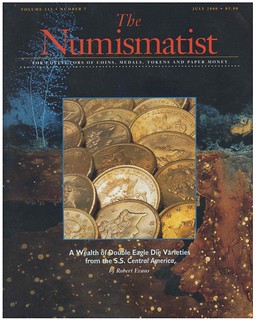 This study resulted in my first significant contribution to written, recorded numismatic knowledge. I was invited to write an article for The Numismatist, to describe my system, the Spiked Shield, and the other seven varieties I had found among 1857-S double eagles. In fact, it turned out to be the COVER ARTICLE for The Numismatist, July 2000 issue.
This study resulted in my first significant contribution to written, recorded numismatic knowledge. I was invited to write an article for The Numismatist, to describe my system, the Spiked Shield, and the other seven varieties I had found among 1857-S double eagles. In fact, it turned out to be the COVER ARTICLE for The Numismatist, July 2000 issue.
Looking back on this objectively after a quarter century, I am a little amazed they wanted me to do this. I'm sure Dwight Manley had no trouble getting the attention of the American Numismatic Association, the organization publishing The Numismatist, and to which he gave generous financial support. He saw my photographs and my evidence in the lab, and he was as eager as I was to share whatever variety could be found in this enormous hoard of double eagles. But I was completely unpublished in this field!
The confidence that both Dwight and The Numismatist Editor Barbara Gregory placed in me as I wrote and submitted this article is something for which I will always be grateful. The article received a wonderful award that year, First Place in the Wayte and Olga Raymond Award for contributions to US Numismatics.
As a result, the numismatic community at large began to see me as some kind of expert, which I suppose I was, at this tiny little specific subject within the enormous field of numismatics. But at coin shows I sometimes felt as if I was swimming in an ocean of knowledge, trying my best to keep afloat as I learned about new subject after new subject.
When speaking to groups of young people, I often asked them to pull a coin from a nearby pocket and take a look at it. Then I say, "congratulations - you're a numismatist!" Numismatics is the study of coins, and study begins with looking - something that most people rarely do. When one looks, one begins to notice the details and differences, and that's what separates numismatists from everyone else. Congratulations, Bob - you became a numismatist! -Editor
To read the complete article, see:
Treasure Talk: Episode 6 Part 1
My Favorite
Pieces
(https://finestknown.com/treasure-talk-episode-6-part-1my-favorite-pieces/)
For the complete series, see:
Category Archives: Treasure Talk with Bob Evans
(https://finestknown.com/treasure-talk-with-bob-evans/)
To read the earlier E-Sylum article, see:
TREASURE TALK WITH BOB EVANS, EPISODE 1
(https://www.coinbooks.org/v28/esylum_v28n12a12.html)
TREASURE TALK WITH BOB EVANS, EPISODE 2.1
(https://www.coinbooks.org/v28/esylum_v28n13a17.html)
TREASURE TALK WITH BOB EVANS, EPISODE 2.2
(https://www.coinbooks.org/v28/esylum_v28n14a15.html)
TREASURE TALK WITH BOB EVANS, EPISODE 3.1
(https://www.coinbooks.org/v28/esylum_v28n15a16.html)
TREASURE TALK WITH BOB EVANS, EPISODE 3.2
(https://www.coinbooks.org/v28/esylum_v28n17a16.html)
TREASURE TALK WITH BOB EVANS, EPISODE 4.1
(https://www.coinbooks.org/v28/esylum_v28n18a13.html)
TREASURE TALK WITH BOB EVANS, EPISODE 4.2
(https://www.coinbooks.org/v28/esylum_v28n19a20.html)
TREASURE TALK WITH BOB EVANS, EPISODE 5.1
(https://www.coinbooks.org/v28/esylum_v28n22a13.html)
TREASURE TALK WITH BOB EVANS, EPISODE 5.2
(https://www.coinbooks.org/v28/esylum_v28n23a16.html)
HOWARD GIBBS COIN ROBBERY ARREST
I've spoken in the past about my fellow Pittsburgh collector Howard D. Gibbs, who had an insatiable appetite for acquiring coins and often went to the ends of the earth like Indiana Jones to do so, particularly with his specialty of Odd and Curious (now known as Ethnographic) money.
This week I was contacted by a descendant of Gibbs who had seen a video of my talk on Gibbs. They shared a 1919 newspaper article about an incident I wasn't aware of, which "highlights the extent to which he would go to acquire coins." They didn't mind my sharing it here. -Editor
Twenty-four years old at the time, Gibbs was a college graduate and member of a prominent family. He'd begun collecting in 1902 and visited a coin exhibit set up at a downtown Pittsburgh bank by Farran Zerbe. That was his first exposure to "case after case of the strangest money." -Editor
The descendant adds:
"When I shared it with my family, including Gibbs' grandsons, they got a big kick out of it. It certainly fit with his personality.
"After coming upon the first article I was confused as to how Gibbs would've been able to establish himself within the collector community with a reputation as a thief. It turns out that Marlier later did not wish to press charges. Perhaps he recognized and respected the passion for collecting in a young man who did not yet have the resources to acquire what he wanted, and would cross moral boundaries to get it. If Marlier and Gibbs became friends after this, and Marlier kept Gibbs' secret, that would give some weight to that theory."
George Marlier was born in 1868 and lived nearly 100 years. He was American Numismatic Association member 102, joining on June 1, 1899. We can imagine, but probably never know what he thought of Howard Gibbs in later years. $4,000 was a *LOT* of money in 1919.
Marlier was a senior member of both the ANA and local Pittsburgh club the Western Pennsylvania Numismatic Society (WPNS). Gibbs was not a member of that group, but I believe he was a cofounder of a separate group, the Pittsburgh Numismatic Society (PNS). -Editor
To read the complete newspaper articles, see:
https://www.newspapers.com/article/pittsburgh-post-gazette-howard-gibbs-arr/175983018/
https://www.newspapers.com/article/the-pittsburgh-post-howard-gibbs-arreste/175983623/
https://www.newspapers.com/article/the-pittsburgh-press-howard-gibbs-is-dis/175984060/
To read the earlier E-Sylum articles, see:
HOW HOWARD GIBBS BEGAN COLLECTING
(https://www.coinbooks.org/esylum_v08n39a25.html)
THE HOWARD D. GIBBS ARCHIVES
(https://www.coinbooks.org/v23/esylum_v23n08a11.html)
To watch the video of my talk, see:
CoinTelevision: Howard Gibbs: Prince of Primitive Money.
(https://www.youtube.com/watch?v=DxRETtj5HU8)
NUMISMAGRAM MEDAL SELECTIONS: JULY 6, 2025
Numismagram's Jeremy Bostwick sent along these five medals from his most recent upload of new material to his site. For all of the new items, please visit https://www.numismagram.com/inventory. -Garrett
103241 | GREAT BRITAIN. Foundation of the City of London School bronze Medal. Issued 1837. City of London series (57mm, 76.74 g, 12h). By Benjamin Wyon. CITY OF LONDON SCHOOL, façade of the school; in three lines in exergue, FOUNDED / BY THE CORPORATION / 1834 // FOR THE RELIGIOUS & VIRTUOUS EDUCATION OF BOYS & THEIR INSTRUCTION IN LITERATURE & USEFUL KNOWLEDGE, female allegory of Knowledge seated right, resting elbow upon Bible and instructing Youth standing to right, holding book and resting elbow upon plinth surmounted by civic coat-of-arms of London and inscribed IOHN / CARPENTER / 1447 in three lines; basket of scrolls to left, globe to right. Edge: Plain. BHM 1680; Eimer 1279; Taylor 120a; Eidlitz 159; Welch 4. Gem Mint State. Glossy red-brown surfaces, with great depth imparted unto the building façade. Though not as scarce as many of the other medals in the City of London series, this is an unusually superb, problem free representative of the type. Ex: Presidential Coin & Antique 83 (22 June 2013), lot 342. $295.
Authorized by the Royal Entertainments Committee, the Corporation of the City of London published numerous medals from 1831 to 1893 to commemorate important events in the life of the city, with this type serving as the fourth in the series. These medals specifically were used as School prizes across various subjects throughout the second half of the 19th century.
To read the complete item description, see:
103241 | GREAT BRITAIN. Foundation of the City of London School bronze Medal.
(https://www.numismagram.com/product-page/103241)
103156 | SPAIN. Burgos. Cathedral of St. Maria bronze Medal. Issued 1867. Most Remarkable Edifices of Europe series (59mm, 105.01 g, 12h). By Jacques & Charles Wiener in Brussels and struck at the Geerts mint in Ixelles. CATEDRAL DE BURGOS, perspective view of the cathedral exterior from the northwest // PRIMERA PIEDRA 20 DE JULIO DE 1221 / CONCLUSION EN EL SIGLO XV, view of the cathedral interior looking from the north transept towards the south. Edge: A few scattered marks, otherwise plain; thickness: 7mm. Ross M282 (R1); van Hoydonck 220; Reinecke 58. Choice Mint State. Rich brown surfaces, with great glossiness in the fields; a minor spot of corrosion is noted in the obverse field. Incredibly deep on the reverse, this type features some of the strongest relief—if not the strongest relief—in the entire series. Compare to a similar example in Stack's Bowers CCO (27 February 2023), lot 71296 (which realized a total of $1,560). $895.
From what is today eastern Netherlands and western Germany, the Wieners were a Jewish family of exceptional medalists, especially known for numerous numismatic works throughout the Kingdom of Belgium. Eldest brother Jacques, along with younger brothers Leopold and Charles, created some of the finest works of medallic art of the 19th century, and all are particularly noted for their work in the highly detailed and intricate work of architectural renderings.
To read the complete item description, see:
103156 | SPAIN. Burgos. Cathedral of St. Maria bronze Medal.
(https://www.numismagram.com/product-page/103156)
103189 | GERMANY. Bavaria. Prince Regent Luitpold silver award Medal. Issued circa 1887-1912 as a prize for first place in military shooting competitions (40mm, 12h). By Alois Börsch & Johann Adam Ries. LUITPOLD PRINZ–REGENT VON BAYERN, bare head left // DEM / BESTEN / SCHÜTZEN in three lines within garlanded oak wreath. Peltzer 1773; Wittelsbach 3034. NGC MS-62. Slate gray surfaces, with tremendous underlying brilliance and a delightful pastel nature to the resulting iridescence that shimmers when cradled. $295.
To read the complete item description, see:
103189 | GERMANY. Bavaria. Prince Regent Luitpold silver award Medal.
(https://www.numismagram.com/product-page/103189)
103245 | GREAT BRITAIN. Trio (3) of Prince Charles silver Medals. Issued 1969. Commemorating the Investiture of Charles as the Prince of Wales. By Johnson Matthey Metals Ltd. in London. All pieces: H.R.H. PRINCE CHARLES PRINCE OF WALES, bust facing slightly right // DRAIG GOCH CYMRU, crowned and garnished coat-of-arms, all within Collar of the Order of the Garter and with lion and unicorn as supporters; below, crown with plumes and Welsh dragon. Edges: Reeded. Gem Mint State. Extremely lustrous and vibrant, with intense iridescent toning throughout. (1): (40mm, 34.96 g, 12h). (2): (32mm, 19.12 g, 12h). (3): (25mm, 10.46 g, 12h). Eimer –. Includes original case of issue (with plush backing having come unglued) and certificate of authenticity as #1407. Each piece also bears this serial number upon its reverse. $435.
Officially crowned as the heir apparent to the British throne in 1969, Prince Charles has the distinction of being the longest serving heir apparent in history—some 70 years and 214 days from the time that his mother, Elizabeth II, acceded to the throne in 1952 and her death in 2022. This trio set of medals is one of a number of medals that were issued for the Prince's ceremony, with the now-king taking the name Charles III following Elizabeth's death.
To read the complete item description, see:
103245 | GREAT BRITAIN. Trio (3) of Prince Charles silver Medals.
(https://www.numismagram.com/product-page/103245)
102661 | SWEDEN & FINLAND. "Only One Earth" multi-piece bronze Medal. Issued 1972 for the United Nations Conference on the Human Environment held in Stockholm (49mm, 216.80 g, 12h). By Kauko Räsänen for Sporrong. Top piece, obverse: Facing female head, slightly left of center, with hair billowing in the wind (indicative of environmental influences) // Top piece, reverse: ONLY ONE EARTH EN ENDA VÄRLD, nude female (Mother Earth) curled left in fetal position within oval-like shape in relief and with lines of longitude and latitude /// Bottom piece, obverse: Nude female crouching slightly right, protecting her face with her left hand // Bottom piece, reverse: UNITED NATIONS CONFERENCE ON THE HUMAN ENVIRONMENT 5. – 16. 6. 1972, the same nude female from the reverse of the other piece, this time curled right in fetal position within oval-like shape, all in incuse and without the gridlines. Edge: 0310•3500 / SPORRONG. Hackl & Klose 37. Essentially as Made. Brassy-dark brown surfaces, with great brilliance and a two-toned nature. Includes original box of issue, as well as certificate of authenticity. A very moving and thought-provoking multi-piece medal that was very much the calling-card of Räsänen. $245.
Räsänen's interesting take on the environmental movement came at a time of greater appreciation for the frailty of the Earth and the irreparable damage which man can and has created. This multi-piece medal was made in conjunction with the conference held by the United Nations in 1972, even featuring their logo upon it.
To read the complete item description, see:
102661 | SWEDEN & FINLAND. "Only One Earth" multi-piece bronze Medal.
(https://www.numismagram.com/product-page/102661)
ST. JAMES'S AUCTIONS JULY 2025 SALE
Here's the press release for the upcoming Auction 108 from St. James's Auctions. -Editor
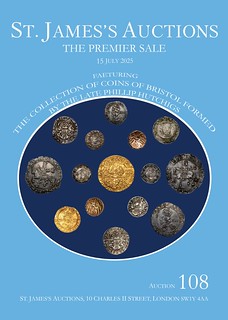 St. James's Auctions is pleased to present the upcoming premier auction scheduled
for 15 July starting at 11 am BST.
St. James's Auctions is pleased to present the upcoming premier auction scheduled
for 15 July starting at 11 am BST.
The auction consists of a good selection of rare and desirable coins including three different collections, alongside a range of other properties.
The sale commences with the fantastic Philip Hutchings Collection of Coins of Bristol, which spans from the Celtic period through to coins of Charles I. Phil was an active member of the numismatic community, who is much missed. He dearly loved Bristol and the history of the area, which he applied to his coin collection (lots 1001-1122).
We are pleased to offer a selection of British coins, which includes a ryal of Edward IV which is certified and graded by NGC as Mint State 61 (1126), as well as an Elizabeth I sixth issue sovereign mint mark A/A crosslet, which originated in The Christopher Comber Collection (1127).
Also on offer are three five guinea pieces, once of Charles II with the overdate 1680/79, which features the elephant and castle mint mark (1136), as well as two examples from George I, both 1726. One example is from the Lady Duveen Collection, as well as the Douglas Morris Collection (1145). The second example was previously in The Peh Family Collection (1146). We are pleased to offer an example of the popular 1839 five pounds featuring Una & the Lion (1172). Certified and graded by NGC as Proof 63 Ultra Cameo, it is in superb original condition.
The auction features further coins of Victoria including 3 Gothic crowns (1194-1196), which are ever popular with numismatic collectors.
Our second named collection to feature in the auction is The David Rowe Collection of Gothic Florins, which nicely compliments the 3 Gothic crowns on offer (1246-1304). David collected these and used them to aid him in his research for various publications which are referenced in the text.
The auction features a good world coin section which features many gold issues, including a vast selection of Russian five roubles (1346-1371).
Our third collection is of a range of decorative medals, medallions, and plaquettes (1381-1415). This is succeeded by a good group of world and British medals which includes gold issues of Anne, Victoria and Edward VII (1428-1430).
Our other upcoming auction - Auction 107 will be held online on 8th July and includes a real variety of coins from ancient times to the present. The auction contains proof sets such as the 1911 coronation set of 10 coins, and a 1937 gold proof set (lots 61 & 62).
For more information, see:
https://stjauctions.com/
THE BOOK BAZARRE
COMPLETE SET OF UMAYYAD GOLD DINARS
Morton & Eden are offering a rare complete set of 56 Umayyad gold dinars in their upcoming sale. -Editor
Morton & Eden Ltd, London-based specialist coin and medal auctioneers, will be offering for sale a complete set of 56 Umayyad gold dinars dating from years 77 to 132 Hijra (CE 696-750).
It comprises one coin of each date, all in excellent condition including the very rare year 77 dinar. They are expected to realise £200,000-300,000 in an auction sale in London on 23 July.
Such sets are rarely encountered and are of great importance to Muslims as they represent the very first purely Islamic gold coinage.
Tom Eden, Director of Morton & Eden, commented, Morton & Eden sold the majority of the
coins in this assembled set in 2006 and we are delighted to be handling the sale again almost
two decades later. The very rare year 77 dinar is especially significant as it was issued by the
great caliph ‘Abd al-Malik bin Marwan who reformed the coinage in this year and set the pattern
for Islamic coins for centuries to follow.
Portraiture was dispensed with in favour of Qur'anic verse to spread the new religion. The Shahada inscribed on their obverses stresses the singularity of God (thereby rejecting the Christian notion of the Trinity) – There is no god but God alone. He has no associate.
From a historical perspective, the coins represent a key stage in the establishment of a stable Islamic state.
For more information, see:
https://www.mortonandeden.com/
DAVISSONS E-AUCTION 51
Davissons E-Auction 51, closing Wednesday, July 23rd 2025, is online now. Here is their press release. -Garrett
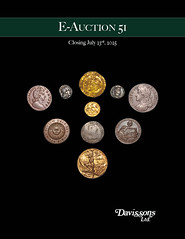 E-Auction 51 is a compact sale of just over 300 lots covering a wide range of coins and related pieces, representing the US and around the world, and eras from ancient to modern.
E-Auction 51 is a compact sale of just over 300 lots covering a wide range of coins and related pieces, representing the US and around the world, and eras from ancient to modern.
It begins with a bit of gold at a time when gold is popular far beyond numismatic interests, interesting and affordable Greek coinage including some appealing silver, bronze and a group of rare Peloponnesos issues (lots 37-43) that merit a look. Ancient Rome is represented by a diverse Provincial, Republican, and Imperial group, a few sestertii, some high grade later silver and, in a modest departure from these currency issues, a group of lead seals and some Paduans.
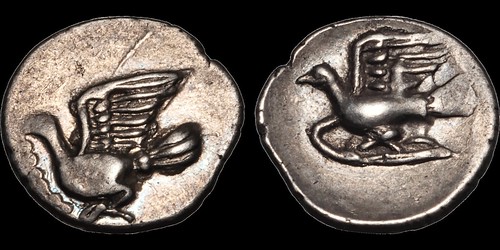
Lot 39. PELOPONNESOS. SIKYONIA. Sikyon. Circa 350-330/20 B.C. AR obol. .89 gm. 12 mm. Dove alighting left, holding fillet in beak / Dove flying left. BCD Peloponnesos 244. HGC 5, 224. Good Very Fine; beautiful lustrous tone with iridescence; struck on good metal.
The British section is primarily minor silver issues—Plantagenet pennies, a few interesting groats and a few milled issues. Later in the sale look for a few pieces from Renaissance Europe, lots of high grade material that has survived in nearly Uncirculated condition, along with a run of a few world coins.
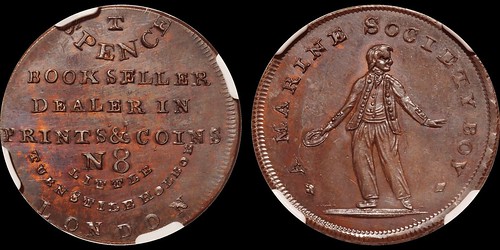
Lot 183. Middlesex 698 (R). Spence. Copper halfpenny. 30 mm. T SPENCE BOOKSELLER DEALER IN PRINTS & COINS NO 8 LITTLE TURNSTILE HOLBORN LONDON in 9 lines
Trade tokens of the late 18th century, a time when minting technology was changing from hand work to machine work, come next. Our firm includes this series consistently in our sales. It is a fascinating period historically and numismatically, and this section includes consignments from several collectors including some who had their pieces graded and placed in holders.
Coins of the United States end the world coin section and a couple of rare but low grade pieces from Colonial and early US Mint issues can be found there. Note the Baltimore shilling (lot 272) showing much of the detail but also wear. The other is an 1806 Heraldic Reverse quarter (lot 282), even wear and scratches, neatly holed at some time but with clear design and a modest estimate. Both of these pieces came from the same collection formed by a collector representing important pieces from the Colonial and early Federal era with pieces that were affordable but still appealing as representative of the times.
Finally, a few interesting medals, three pre-formed collections of US coins in holders, and an historic five dollar silver certificate with a historically wrong portrait.
Assembling and cataloging this sale raised some interesting questions. One is a question about the numismatic value of gold coins in a time of historic high prices. The only rational answer is that gold coins were issued in that metal because the market for the metal established the commercial value of the piece no matter what the denomination noted on the coin was.
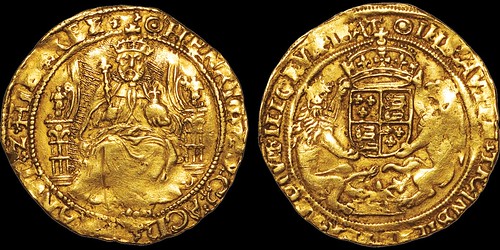
Lot 1. GREAT BRITAIN. Henry VIII. 1509-1547. AV half sovereign. 6.3 gm. 30 mm. Tower mint. Pellet-in-circle i.m. The king seated on a throne, facing, older visage / Crowned arms with lion and dragon supporters. S. 2294. N. 1827.
One piece where gold content is relevant only as a question of authenticity is the gold half sovereign of Henry VIII with an exceptional portrait (lot 1). This was a hard piece to grade. It is well struck and with better detail than typically seen. The old head portrait is unusually clear on the piece. The surfaces have more freshness
than other examples I have seen. (I have noticed with slabbed coins that EF and AU grades do rate surface as well as wear.)
The other piece that was challenging was the Baltimore shilling (lot 272). The gradations of grading in the MS 60 to 70 range seem to me challenging to discriminate when it is only a point or two, particularly in the higher end of the range. But grading US material in the AG3, G4, VG8 range is challenging as well. The shilling lacks detail but the wear is even, the silver shows wear but not damage, the color is attractive and there is no doubt about the details. The early shilling has damage but it is a decent example of what it is, and well representative if you are interested in the era and the type—it opens at the AG3 price level.
Allan Davisson
June 25th, 2025
NUMISMATIC NUGGETS: JULY 6, 2025
Here's a selection of interesting or unusual items I came across in the marketplace this week. Tell us what you think of some of these. -Editor
1854 Art Union of London Medal
Early Victorian 'Art Union of London' bronze medallion c1854 (wt: 82g)
A nice medallic portrait of William Wyon. I don't believe I've seen this medal before. -Editor
To read the complete lot description, see:
Lot 492: Early Victorian 'Art Union of London' bronze medallion c1854 (wt: 82g)
(https://www.invaluable.com/auction-lot/Early-Victorian-Art-Union-of-London-bronze-meda-492-c-61C454EA45)
Columbia Farthing
COLUMBIA FARTHING TOKEN
This rang a bell due to our earlier discussions. See the articles linked below for more. -Editor
To read the complete lot description, see:
Lot 973T: COLUMBIA FARTHING TOKEN
(https://www.invaluable.com/auction-lot/COLUMBIA-FARTHING-TOKEN-973T-c-7A5409396D)
To read the earlier E-Sylum articles, see:
QUERY: COLUMBIA FARTHINGS
(https://www.coinbooks.org/v24/esylum_v24n11a15.html)
MORE ON COLUMBIA FARTHINGS
(https://www.coinbooks.org/v24/esylum_v24n12a12.html)
1903 Teresa and Maria Milanello Medallion
Medallion France 1903.
Ringel Trognon D'Illzach
Teresa and Maria Milanello Musicians Violin
130mm
To read the complete lot description, see:
Italy. Medal Teresa and Maria Milanello Musicians Violin 130mm (No Reserve Price)
(https://www.catawiki.com/en/l/96379225)
Unknown Jewish Quarter Token
Token or Coin - One side bears the English inscription: "Jewish Quarter IN HOC S.V.", while the other side is inscribed in Hebrew: "Kosher". Date and origin unknown, likely the United States, circa the 19th century. Apparently extremely rare. Diameter: approximately 2.5 cm. Fair to good condition, with scratches, wear, and signs of aging.
Is anyone familiar with this piece? -Editor
To read the complete lot description, see:
Lot 369: Jewish Quarter - Kosher - Unknown Early Token, USA
(https://www.invaluable.com/auction-lot/Jewish-Quarter-Kosher-Unknown-Early-Token,-USA-369-c-CEF43B885F)
1927 George V Proof Crown
In 1927 the Royal Mint changed the design on our coinage, at the same time they issued the first King George V Crown. This crown was only included in the 1927 Proof Set and is thus the only Wreath Crown issued in Proof for collectors. The Wreath Crown is also known as the Christmas Crown as it was only issued at Christmas time for wealthy patrons to give as gifts. It was issued until 1936 but the 1927 issue is the only one issued in Proof.
From the Coincraft Newsletter No. 129. -Editor
SPANISH MUSEUM DISPLAYS 50,000 COIN HOARD
The National Archaeological Museum in Madrid recently announced that it will display a hoard of 50,000 Roman coins for the first time after their 2016 discovery. Thank you to Leon Saryan for sending it. -Garrett
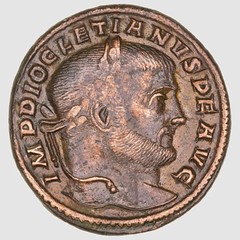 Spanish officials recently unveiled a trove of priceless Ancient Roman coins, marking the first time the massive collection has been put on public display.
Spanish officials recently unveiled a trove of priceless Ancient Roman coins, marking the first time the massive collection has been put on public display.
The National Archaeological Museum in Madrid recently announced the Treasure of Tomares
exhibit in a press release.
Discovered during a construction project in Tomares, Spain, in 2016, the collection consists of over 50,000 coins.
The coins date between the late third century and the early fourth century A.D.
Subsequent investigations revealed this location corresponded to an olive estate of ancient Hispalis, the Roman-era Seville.
The museum added, To reinforce the historical context, the exhibition is complemented by a selection of this type of coin, bronze pieces with a silver surface coating belonging to the nine emperors who succeeded during this period, in addition to seven specimens considered unique due to the exceptional iconography of their reverses.
The collection is the largest assortment of Roman coins discovered in Spain and one of the largest in the world.
To read the complete article, see:
Museum unveils massive collection of 50,000 coins that remained hidden for centuries
(https://nypost.com/2025/06/24/world-news/museum-unveils-massive-collection-of-50000-coins-that-remained-hidden-for-centuries/)
For more information, see:
Ancient Roman coin treasure finally revealed to public after being hidden for centuries
(https://www.foxnews.com/travel/ancient-roman-coin-treasure-finally-revealed-public-hidden-centuries)
Buried for 17 centuries: Spain's Roman coin hoard reveals ancient secrets
(https://artdaily.com/news/182294/Buried-for-17-centuries--Spain-s-Roman-coin-hoard-reveals-ancient-secrets)
EXPLORING THE COINS OF CHARLEMAGNE
Mike Markowitz wrote an article in CoinWeek on the coins of Charlemagne. Here's an excerpt - see the complete article online. -Garrett
The Roman system of coinage outlived the Roman Empire itself. Prices were still being quoted in silver denarii in the time of Charlemagne, king of the Franks, from 768 to 814. The difficulty was that by the time Charlemagne was crowned Imperator Augustus in 800, there was a chronic shortage of silver in Western Europe.… So rare was the denarius in Charlemagne's time that twenty-four of them sufficed to buy a Carolingian cow. (Ferguson, 2008. page 24)
We don't know where he was born – possibly somewhere in what is now Belgium. The year is uncertain – some sources indicate 742, while others suggest 747 or 748. Ironically, his name in the English-speaking world is Charlemagne, a French version of Charles the Great,
although his mother tongue was Old High German, and he would have referred to himself as Karlus (or Carlus). This name appears on many of his coins. His father, Pepin the Short,
was king of the Franks (ruled 751-768). His grandfather was Charles Martel (c. 688-741), the legendary warlord who defeated the Muslim invasion of Gaul at the Battle of Tours (October 10, 732). He fathered at least twenty children by numerous women; some historians regard Charlemagne as the Father of Europe.
The extensive coinage in his name set the pattern for Western European currency for centuries to come.
The Coins of Charlemagne Tell a Story
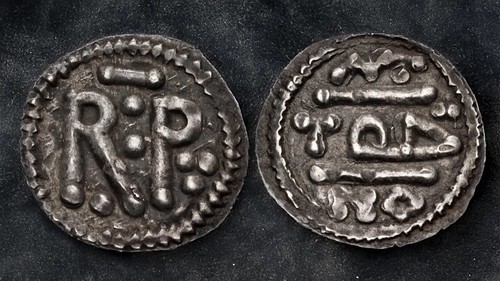
Pépin the Short. 754/5-768. Silver Denier (18mm, 1.10 g) Uncertain mint, possibly St. Denis. Depeyrot 892/2. Image: CNG / CoinWeek.
When Karl's father, Pepin the Short,
came to the throne in 751, the currency of the Frankish kingdom was a mess. Under the do-nothing
kings of the previous Merovingian dynasty, hundreds of local mints – often just a village blacksmith or goldsmith's shop – turned out a bewildering variety of crudely struck pieces in small batches without any standardization of weight, silver alloy fineness, or design. Most coins were deniers (from the Latin denarius), nominally weighing about 1.3 grams, although many were severely underweight. There was also a small obole, valued at half a denier. In 755, Pepin initiated a major coinage reform, bringing all minting under royal control. Pepin's new denier bore bold letters R:P on the obverse, abbreviating the Latin Rex Pipinus (King Pepin.
) Reverses bore a few garbled letters, possibly an abbreviated name of the mint; many of these have never been deciphered.
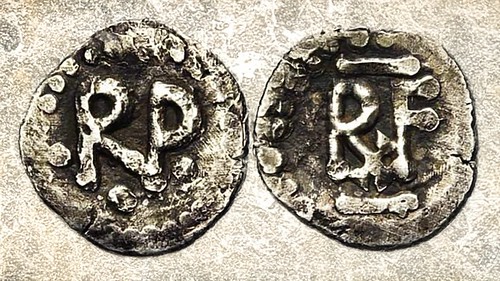
Pepin the Short (751-768), Silver obol, no mint name. 0.56g. Extremely rare. Unique and unpublished. Image: Jean Elsen & ses Fils S.A. / CoinWeek.
Pepin's silver oboles are very rare. The reverse often bears the letters R F for Rex Francorum (King of the Franks.
) An example described as Unique and Unpublished, Very Fine
was unsold against an estimate of €7,500 in a 2014 Belgian auction.
Charlemagne and the Formation of the Holy Roman Empire
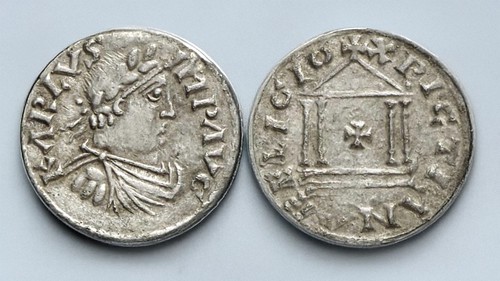
Karl Class 4 portrait Silver Denier, undetermined mint. c. 812-814. 1.53 g Depeyrot 1166. Image: Künker / CoinWeek.
On Christmas Day in the year 800, Pope Leo III crowned Charlemagne as Roman Emperor,
initiating the so-called Holy Roman Empire,
which French philosopher Voltaire (1694-1778) noted was neither holy, nor Roman, nor an empire.
This coronation was politically possible because Empress Irene in Constantinople had deposed and blinded her son, Constantine VI, in 797, seizing the imperial throne for herself. As far as the Franks were concerned, the absence of a male ruler meant the imperial throne was vacant. In 812, envoys from the Byzantine Empire finally recognized Karl's imperial title. Possibly to celebrate this event, Karl issued the rare Class 4 denier, bearing his laurel-crowned portrait, with the Latin inscription KARLVS IMP AVG (Karl Emperor Augustus.
) To reinforce the message that his imperial coronation was blessed, the reverse bears the image of a church with the inscription XPICTIANA RELIGIO (The Christian Religion.
) Only about 55 examples of this rare type are known, struck from several different dies, at an uncertain mint or mints (possibly Karl's capital of Aachen).
To read the complete article, see:
the Coins of Charlemagne
(https://coinweek.com/exploring-the-coins-of-charlemagne-mike-markowitz/)
2026 SEMIQUINCENTENNIAL COINAGE
Jeff Garrett published an NGC article on special coin and medal issues for the U.S. semiquincentennial. Here's an excerpt - see the complete article online. -Editor
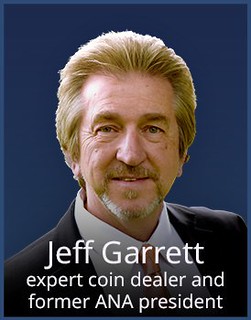 Starting later this year, you will probably start hearing the tongue-twisting term "Semiquincentennial" quite often. The term represents the celebration of the 250th anniversary of the signing of the Declaration of Independence. This landmark anniversary for the United States will be widely heralded around the world.
Starting later this year, you will probably start hearing the tongue-twisting term "Semiquincentennial" quite often. The term represents the celebration of the 250th anniversary of the signing of the Declaration of Independence. This landmark anniversary for the United States will be widely heralded around the world.
The year 2026 also promises to be a landmark year for numismatics, as well. The US Mint will be issuing an array of special commemorative coins to mark the occasion. One of the most interesting numismatic issues that has been announced is the first-ever "bell-shaped" coin, which is based on the Liberty Bell in Philadelphia. This innovative mint product is sure to be popular with collectors seeking an interesting relic of the celebration.
The US Mint will also be issuing special "privy mark" coins noting the dates 1776-2026 on several circulating coins. The public will be encouraged to search their pocket change for these special issues. More details on these and other 2026 US Mint coins will become available as the year progresses.
Another exciting issue that has been proposed is the "Best of the Mint" collection. This may include reissues of the classic 1916 Mercury Dime, 1916 Standing Liberty Quarter, 1916 Walking Liberty Half Dollar, 1804 Draped Bust Dollar and the 1907 High Relief Double Eagle. The latter two could be amazing and very popular.
The US Mint is not the only sovereign mint that will be issuing coins for the 250th anniversary of US independence. Ironically, the British Mint has a few special coins or commemorative medals planned for the celebration. The French Mint will also be issuing coins or medals highlighting the vital role France played in the US gaining its independence. There will no doubt be an array of special commemoratives being issued by other minting authorities around the world.
Reportedly, the US Mint will keep striking one-cent coins until its supply of planchets has been depleted. This will probably happen in 2026. The US Mint discontinued placing orders for new cent planchets. Many hobby leaders had hoped the US Mint would continue to make one-cent coins for Proof sets or other special collector sets, but this has not been announced so far.
To read the complete article, see:
Jeff Garrett: Getting Ready for the 2026 Semiquincentennial
(https://www.ngccoin.com/news/article/14237/)
HYDERABAD HOTEL TOKENS
In Hyderabad, India, tokens were used in hotel kitchens, issued in different shapes or with different letters stamped on them to signal what food to cook and serve. The system still survives in some hotels to this day. -Garrett
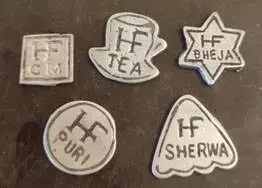 In the busy hotels of Hyderabad's old city, where the aroma of Irani chai, malai bun, and paya soup filled the air long before the arrival of QR codes, a small metal token was used to manage orders — a system that still survives in a few hotels. It was not a currency coin but a simple handmade token that helped kitchens run smoothly. This system was introduced many years ago, especially in the old city. Customers would go to the counter, pay for their food, and receive a small token instead of a printed bill.
In the busy hotels of Hyderabad's old city, where the aroma of Irani chai, malai bun, and paya soup filled the air long before the arrival of QR codes, a small metal token was used to manage orders — a system that still survives in a few hotels. It was not a currency coin but a simple handmade token that helped kitchens run smoothly. This system was introduced many years ago, especially in the old city. Customers would go to the counter, pay for their food, and receive a small token instead of a printed bill.
In the busy hotels of Hyderabad's old city, where the aroma of Irani chai, malai bun, and paya soup filled the air long before the arrival of QR codes, a small metal token was used to manage orders — a system that still survives in a few hotels.
It was not a currency coin but a simple handmade token that helped kitchens run smoothly. This system was introduced many years ago, especially in the old city. Customers would go to the counter, pay for their food, and receive a small token instead of a printed bill.
Each token, shaped differently to represent a specific dish, was handed over to the waiter by the customer or given by the cashier — signalling to the kitchen what to cook and serve.
For example, a round token meant puri, a triangle stood for sherwa, a star indicated bheja fry, and a cup shape represented tea. Some tokens had letters stamped on them, like CB
for chicken biryani. When we see the token, we immediately know what to prepare. There's no need to ask the customer again,
said Deepak Rajput, who works in a local hotel.
The system also helped prevent billing mistakes. Since every item was linked to a token, there was no chance of overbilling. Hotels couldn't prepare more than what the cashier had approved, adding a layer of accountability.
The system also helped bridge language barriers, as the staff needed to understand only the shapes of the tokens.
To read the complete article, see:
Metal Tokens That Once Ran Hyderabad's Hotels
(https://www.deccanchronicle.com/southern-states/telangana/metal-tokens-that-once-ran-hyderabads-hotels-1889379)
THE SAIFABAD MINT MUSEUM
Coincidentally, this week I also ran across an article about a numismatic museum in Hyderabad - the Saifabad Mint Museum. -Editor
Tucked away in the heart of Hyderabad is a lesser-known yet fascinating treasure, the Saifabad Mint Museum. A place where history meets heritage, and metal tells stories, this museum is a must-visit for history lovers, coin collectors, and curious minds alike. Not just another museum, Saifabad Mint is a walk through India's rich numismatic journey the story of coins, currency, and craftsmanship.
Established in 1903 by Mir Mahboob Ali Khan, the sixth Nizam of Hyderabad, this site originally functioned as a mint, a place where coins were produced. What made this mint remarkable was that it was the first in India to manufacture machine-made coins. This was a major leap forward for the country's coinage system, shifting from handmade to modern precision.
Back in its time, the Saifabad Mint was a symbol of innovation and power, producing coins not just for Hyderabad but also contributing to the larger monetary system of the region.
In June 2022, as India celebrated 75 years of independence, the mint was transformed into a museum by the Security Printing and Minting Corporation of India Limited (SPMCIL). This initiative turned a century-old coin factory into a vibrant learning space for the public, a space where coins narrate tales of empires, economy, and evolution
Walking into the museum is like stepping back in time. The exhibits offer a comprehensive overview of India's coinage history, tracing the journey from ancient punch-marked coins to the sleek coins of today.
The museum displays a replica of the world's largest gold coin, weighing 11 kg, which is a significant highlight for visitors.
To read the complete article, see:
Walkthrough Hyderabad's Museum that features a 11kg gold coin
(https://www.siasat.com/walkthrough-hyderabads-museum-that-features-a-11kg-gold-coin-3241134/)
1849 $20 CENTRAL AMERICA COMMEMORATIVE
Last week we mentioned the 1857 $10 Vaquero Reproduction created by Ron Landis from gold recovered from the SS Central America shipwreck. Now's a good time to mention another Landis work, the 1849 Type I Double Eagle commemorative also struck from SS Central America gold. They're offered by Adam Crum's Finest Known. Here's their website product description. -Editor
Introducing the 1849 Type I Double Eagle SS Central America Commemorative Restrike
The discovery of gold at Sutter's Mill in 1848 ignited the California Gold Rush, one of the most transformative events in American history. As thousands of fortune seekers flooded into the West, vast quantities of gold were unearthed, forever altering the national economy. The influx of raw gold created a critical need for a higher denomination coin to facilitate large transactions and absorb the growing supply of bullion entering the U.S. Mint.
In response, Congress passed the Act of March 3, 1849, authorizing the creation of a bold new $20 gold coin—dubbed the Double Eagle.
That same year, the U.S. Mint struck two coins as prototypes: the 1849 $20 Liberty Head Double Eagle. Designed by Chief Engraver James B. Longacre, the obverse featured a classical Liberty crowned with a coronet, while the reverse displayed a majestic heraldic eagle—emblems of American strength and aspiration.
Never released into circulation, there is but a lone known specimen preserved by the Mint as a pattern coin and now resides in the Smithsonian Institution's National Numismatic Collection. It is widely regarded as the most valuable coin in existence with notable experts placing its value of more than $25 million—not just for its extreme rarity, but for its profound historical significance.
But the story doesn't end there.
In 1857, the SS Central America, a steamship carrying tons of freshly minted coins and gold monetary ingots from the California Gold Rush, sank in a hurricane 200 miles off the Carolina coast—taking with it over 400 lives and a fortune in gold. This tragic loss contributed to a national financial panic called the Panic of 1857
and became one of the most infamous shipwrecks in American history.
Over a century later, co-discoverers Bob Evans and Tommy Thompson located the wreck and recovered an astonishing cache of Gold Rush treasure dubbed The Greatest Treasure Found
by Life Magazine—including the very ingots mined from California's golden hills. These rare, pristine ingots created a once-in-a-lifetime opportunity to honor one of numismatics' most legendary coins.
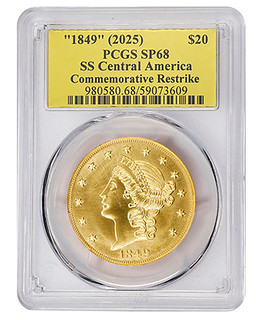 In 2025, gold from the SS Central America was used to create a series of extraordinary restrikes of the 1849 $20 Liberty Double Eagle. Struck in both Specimen Proof-Like, to look like the Smithsonian specimen, and an ultra-limited Proof Deep Cameo finish, these commemorative masterpieces pay tribute to the original coin, the California Gold Rush, and the dramatic maritime legacy of the Ship of Gold.
In 2025, gold from the SS Central America was used to create a series of extraordinary restrikes of the 1849 $20 Liberty Double Eagle. Struck in both Specimen Proof-Like, to look like the Smithsonian specimen, and an ultra-limited Proof Deep Cameo finish, these commemorative masterpieces pay tribute to the original coin, the California Gold Rush, and the dramatic maritime legacy of the Ship of Gold.
Today, these hugely popular coins are known as the Type I Double Eagle, and they stand as one of the most beloved coins in U.S. numismatics. In fact, seven different dates from the series are listed among the 100 Greatest U.S. Coins—more than any other coin series. This speaks volumes about its popularity and prestige.
Finest Known founder Adam Crum—a leading expert on the California Gold Rush, Type I Double Eagles, and shipwreck coins—partnered with world renowned master engraver Ron Landis to bring these restrikes to life. The result is a breathtaking fusion of history, artistry, and gold, capturing the soul of America's golden age.
Now, for the first time, collectors and history enthusiasts can own a tangible piece of this epic saga. These SS Central America 1849 Double Eagle commemorative coins—struck in authentic California Gold Rush gold recovered from the ocean floor—are available in stunning Specimen Proof-Like and ultra-premium Proof Deep Cameo finishes. Each coin is a museum-worthy piece of numismatic art.
Whether you're a seasoned numismatist or newly inspired by the romance of the Gold Rush, this is your chance to own a true piece of American history—crafted from gold that once slept on the ocean floor, now reborn in honor of one of the most iconic coins ever minted, the 1849 Type I Double Eagle.
Bibliophiles note: while supplies last, purchasers also receive copies of The Philadelphia Mint Strikes Gold by Michael F. Moran & Jeff Garrett and America's Greatest Treasure Ship: The SS Central America by Q. David Bowers. -Editor
To read the complete article, see:
1849 $20 SS CENTRAL AMERICA GOLD 1 OZ – .9999 PURE GOLD RESTRIKE PCGS GOLD LABEL SP68
(finestknown.com/product/1849-20-ss-central-america-gold-1-oz-9999-pure-gold-restrike-pcgs-gold-label-sp68/)
Here are the other commemoratives struck from SS Central America gold. -Editor
To read the earlier E-Sylum article, see:
MORE ON RON LANDIS :
1857 $10 Vaquero Reproduction
(https://www.coinbooks.org/v28/esylum_v28n26a08.html)
To read the earlier E-Sylum article, see:
S.S. CENTRAL AMERICA COMMEMORATIVE RESTRIKE CLUES
(https://www.coinbooks.org/esylum_v18n19a37.html)
EAST CARIBBEAN STATES CURRENCY
Stack's Bowers Currency Auction Associate Joe Pyle published this article about the East Caribbean States and their currency in the firm's Paper Money of the Week column. -Garrett
While working on our Summer 2025 Global Showcase Auction, a collection of East Caribbean States $100 banknotes came across my desk. Their attractive design caught my eye, so I decided to do some research and was surprised at the number of varieties available for these notes. Here I will look closely at some of these notes and their history, focusing on the $100 denomination. This blog is based on an earlier article written by my colleague Dennis Hengeveld that is no longer available online.
Starting in the early 17th century, the British claimed several islands in the Caribbean, competing directly with Dutch, French, and Spanish interests in the region. Early claims included St. Kitts (the first British settlement in the region — 1624), Antigua, and Montserrat (both 1632). British control spanned a large area, with territories in both the Leeward and Windward islands of the Caribbean, collectively known as the British West Indies. Most of the islands were combined into the short-lived West Indies Federation in 1962 after initially being divided into Windward and Leeward islands. Following the dissolution, some nations gained independence while others became colonies under London authority.
The British Caribbean Territories Currency Board was replaced in 1965 by the East Caribbean Currency Authority, and that same year, the East Caribbean Dollar was introduced. The islands that used the currency were Anguilla, Antigua and Barbuda, Barbados, Dominica, Montserrat, Saint Kitts and Nevis, Saint Lucia, and Saint Vincent.
There were four denominations in this first series: $1, $5, $20, and $100. In comparison with the first three denominations, which are mainly red, green, and purple, the $100 is more colorful, with shades of green, blue, red, and black. A portrait of Queen Elizabeth II by Pietro Annigoni is featured on all denominations, along with the same design, and a tropical scene depicting St. George's harbor in Grenada. Regardless of where they were issued, the notes were identical during their first issuance. During this time, only the signatures on the face of the note and the list of countries on the reverse (which were countries of the Currency Union) were altered due to Grenada joining in 1968 and thw withdrawal of Barbados in 1972.
Beginning in 1983, following the establishment of the East Caribbean Central Bank, a black overprint of a circled letter on the left side of the note indicated the island where the notes were first issued. The letters and corresponding countries were:
A – Antigua and Barbuda
D – Dominica
G – Grenada
K – Saint Kitts and Nevis
L – Saint Lucia
M – Montserrat
U – Anguilla
V – St. Vincent
The entire East Caribbean Series is highly collectible and has some underrated varieties that have proven to be extremely difficult to find. With some exceptions based on the series and island of issuance, the $100 denomination is generally the scarcest. It is very difficult to find some varieties in any grade, particularly in the first few series. The sale of any first issue $100 (Pick-16) is uncommon as they are very scarce to rare for all varieties, and the rarer variants only come up when specialized collections are sold. For example, while specimens exist for Pick-16m (U
overprint for Anguilla), we are not aware of any issued examples. If you have one, please do let me know!
The East Caribbean Central Bank released a new design in December 1986. A revised portrait of Queen Elizabeth II appears at the right, along with a modified design and the same color scheme as the previous series. In this series, the island of issue is indicated by the last letter in the serial number rather than by the circled letters. Notes issued in Anguilla are an exception. The bank overprinted these notes with a circled U for St. Vincent. Oddly, Anguilla is not mentioned on the map on the right of the front of the 1986 issue. As a result, in 1988, an updated version was released. This variety has Anguilla named, and notes for that island now display the suffix U
in the serial number. There are two signature varieties for most of the islands in this series, which were issued until 1993, and featured the signature of the governor of the East Caribbean Central Bank. The first variety was produced until 1989 and shows Cecil Jacobs' signature, while the second variety was printed afterwards and features K. Dwight Venner's signature.
The $100 notes issued in the 1980s (Pick-20 & Pick-25) have proven to be rare, especially in higher grades, even though they are relatively recent. Very few were set aside, and because of their attractive color scheme and limited availability, collectors have taken a strong interest in them. Several varieties of Pick-25 are rarely offered for sale in any grade; generally speaking, the second signature is rarer than the first.
All denominations, including the $100 (Pick-30), saw significant design changes in 1993. The colors on the $100's changed to mostly brown and green on both sides, but the picture of Queen Elizabeth II stayed the same. A picture of Sir Arthur Lewis, a St. Lucian economist, is on the reverse at the left and the East Caribbean Central Bank's St. Vincent headquarters is shown on the right. The 1993 series was short-lived as there was confusion among the public due as the denominations were squeezed in the corner, making them difficult to read. A revised version, including the $100 (Pick-35), was released in 1994. This version has slightly altered colors for the letters and more spaced-out denomination digits.
With just minimal changes, mostly the addition or updating of a foil security device at the upper right, this would remain the main design going forward. Among the varieties for the $100 are Gold Foil (1998, Pick-36), the engraving on the reverse slightly modified (2000, Pick-41), and Silver Foil (2003, Pick-46). In 2008, the letter indicating the place of issue was dropped (Pick-51), and marks for the blind were added in 2012 (Pick-55a). The security strip was widened in 2015 (P-55b), and this was the final paper $100 for the East Caribbean States. The Eastern Caribbean Central Bank announced on September 5, 2018, that it would introduce a new series of polymer notes starting in the middle of 2019. This issue would keep the same color schemes and denominations as previous issues but would feature new designs and a vertical orientation.
We currently have a number of scarce $100 varieties offered in the Mid-Year 2025 World Paper Money Auction. Additional notes will be featured in the Summer 2025 Global Showcase Auction, scheduled for August. To take advantage of the strong market and to consign to one of our upcoming sales, please contact Dennis Hengeveld at Dennis@stacksbowers.com or Aris Maragoudakis at Aris@Stacksbowers.com.
To read the complete article, see:
A Look At The East Caribbean States and Their Currency
(https://stacksbowers.com/a-look-at-the-east-caribbean-states-and-their-currency/)
LOOSE CHANGE: JULY 6, 2025
Here are some additional items in the media this week that may be of interest. -Editor
We don't generally discuss grading and prices, but we do cover hobby history and this new Red Book Podcast with guest John Albanese of CAC Grading provides a great overview of the evolution of coin collecting and grading, market dynamics and more. -Editor
The conversation with John Feigenbaum and Jeff Garrett covers topics such as potential expansion into world coins, the role of AI in grading, and the popularity of different type coins. The trio also discuss industry trends, including "gradeflation," the impact of economic uncertainties on the market, and recent business developments in the hobby.
To watch the complete interview, see:
Red Book Podcast with Special Guest: John Albanese of CAC Grading
(https://www.greysheet.com/news/story/red-book-podcast-with-special-guest-john-albanese-of-cac-grading)
John Albanese on CAC, Grading Services, Gradeflation, Moderns vs. Classic Coins, Market Trends...
(https://www.youtube.com/watch?v=W_YalShM1Os)
It's not new, but I stumbled on this one this week. J.P. Morgan published a well-produced video on the history of currency in the U.S. -Editor
American money has changed drastically since the birth of the nation. In Part 1 of this two-part series, discover the origins of bank notes and how institutions, including one of our predecessors, played a role in creating modern money.
To watch the complete video, see:
History of U.S. Currency | History is Our Story | J.P. Morgan
(https://www.youtube.com/watch?v=8Cdj1hc6PPU)
In this new article, Andrew Crellin of Sterling & Currency researches the unusual packaging of a 1990 gold coin set and discovers connections to business, government, gold marketing and gold-backed notes (Australian Gold Notes), which were payable in gold coins and required physical gold reserves. -Editor
We recently bought a 5-coin set of Kangaroo Nugget gold coins dated 1990 through our office. Although that was the first year the Kangaroo design was introduced to Australia's gold bullion coins, the coins themselves are not rare at all - the half ounce bullion coin that year had a declared mintage of 64,471 and the one ounce coin sold out at a mintage of 300,000. What was interesting about the coins was they were housed in a green leatherette case with a logo for the R&I Gold Bank.
While the R&I bank has been trading in various forms since 1895, until I saw this case I had never seen any reference to The Gold Bank outside of the Hansard records of WA Parliament. Determining why and when this case was is an ongoing process, but has been made easier with some investigation into the regulatory background to the Perth Mint; Gold Corporation and the R&I Bank. You might be wondering why the hell it's necessary to investigate regulatory records to determine when a box was made, which is a fair question. My initial questions about the origin of a box labelled "Gold Bank" were stymied when I realised the first name the WA Government had drafted for the parent authority for the Perth Mint was "Gold Bank" and not "Gold Corporation". While the R&I Bank name was clearly printed on the box, I wondered whether it may have been issued by the original Gold Bank.
To read the complete article, see:
From Gold Banking Corporation to Gold Corporation to the R&I Gold Bank
(https://www.sterlingcurrency.com.au/blog/news-research/decimal-coins-banknotes/from-gold-banking-corporation-to-gold-corporation/)
Andrew also had a pleasant surprise when a caller turned out to actually have a rare error coin touted in the media. It also has a connection to packaging, and was bought and resold quickly. Nice find! -Editor
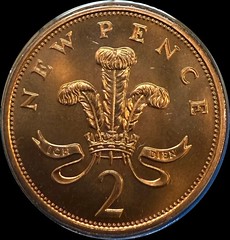 Coin dealers like us are called multiple times each day about coins that the Daily Mail or Yahoo 7 has chosen to write a half-assed clickbait article about - one of those coins is the 1983 British twopence with the term NEW PENCE across the reverse. We got a call a few weeks back from a local guy that was adamant he had one. I bet him he didn't and sure enough, I lost the bet. (It's one I'd win 999 times in a thousand.)
Coin dealers like us are called multiple times each day about coins that the Daily Mail or Yahoo 7 has chosen to write a half-assed clickbait article about - one of those coins is the 1983 British twopence with the term NEW PENCE across the reverse. We got a call a few weeks back from a local guy that was adamant he had one. I bet him he didn't and sure enough, I lost the bet. (It's one I'd win 999 times in a thousand.)
This set contains one of the most keenly-sought decimal error coins from the UK.
Between 1971 and 1981 2p coins featured the words NEW PENCE on the reverse, above the ostrich feather plumes of the Prince of Wales badge.
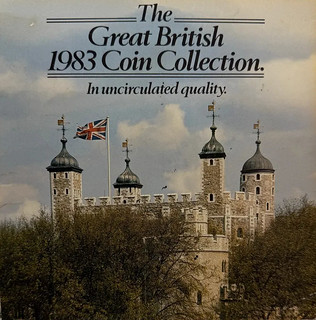 From 1982, these bronze coins were meant to read TWO PENCE, however an error occurred in 1983, resulting a few Two Pence pieces being struck with the old design.
From 1982, these bronze coins were meant to read TWO PENCE, however an error occurred in 1983, resulting a few Two Pence pieces being struck with the old design.
This example has been found in an uncirculated 1983 annual coin set, produced for Martini & Rossi, the Italian beverage company.
These Great British 1983 Coin Collection sets contain eight uncirculated UK coins, including the New Pence 2p, and were offered as part of a drinks promotion.
A similar set was also issued by Heinz, some of those sets also contain this rare Royal Mint error coin.
To read the complete item description, see:
Great Britain 1983 Martini Coin Set - Includes the Rare Newpence Mule Error
(https://www.sterlingcurrency.com.au/great-britain-1983-martini-coin-set-includes-the-r)
FEATURED WEBSITE: HISTORICAL MEDAL SOCIETY
This week's Featured Website is the Historical Medal Society.
The Historical Medal Society was established in 2014 by two British numismatists keen to promote the study of historical medals and medallions. The Society meets annually at Medallion Congress and publishes research in the Historical Medal Journal.
The most recent edition of the Historical Medal Journal, Number 6, was published in June 2024 and is available for purchase.
The 11th Medallion Congress will be held at the The Stratford Manor Hotel, Warwick on 12 July 2025.
The Society welcomes requests to help identify medals or medallions, so if you have a mystery medal and think we may be able to help, please contact us (attaching an image if possible).
https://www.historicalmedalsociety.org.uk/
ABOUT THIS ISSUE: JULY 6, 2025
Pretty normal week for The E-Sylum. On Wednesday I sent Garrett several articles to work on and when he finished them on Saturday I added them to the issue. The Friday holiday let me get caught up on quarterly bookkeeping chores with our advertisers and sponsors.
Favorite non-numismatic article headline of the week: 7 Body Parts That Are More or Less Useless . But I like my Palmaris Longus... -Editor
Wayne Homren
Wayne Homren is the founding editor of The E-Sylum and a consultant for the Newman Numismatic Portal. His collecting interests at various times included U.S. Encased Postage Stamps, merchant counterstamps, Pittsburgh Obsolete paper money, Civil War tokens and scrip, Carnegie Hero Medals, charge coins and numismatic literature. He also collects and has given presentations on the work of Money Artist J.S.G. Boggs. In the non-numismatic world he's worked in artificial intelligence, data science, and as a Program Manager for the U.S. Department of Defense.
Garrett Ziss
Garrett Ziss is a numismatic collector and researcher, with a focus on American paper money and early U.S. silver and copper coins. He is also a part-time U.S. coin cataloger for Heritage Auctions. Garrett assists Editor Wayne Homren by editing and formatting a selection of articles and images each week. When he's not engaged in numismatics, Garrett is pursuing a Master's Degree in Quantitative Economics at the University of Pittsburgh.
Pete Smith
Numismatic researcher and author Pete Smith of Minnesota has written about early American coppers, Vermont coinage, numismatic literature, tokens and medals, the history of the U.S. Mint and much more. Author of American Numismatic Biographies, he contributes original articles to The E-Sylum often highlighting interesting figures in American numismatic history.
Greg Bennick
Greg Bennick (www.gregbennick.com) is a keynote speaker and long time coin collector with a focus on major mint error coins and US counterstamps. He is on the board of both CONECA and TAMS and enjoys having in-depth conversations with prominent numismatists from all areas of the hobby. Have ideas for other interviewees? Contact him anytime on the web or via instagram
@minterrors.
John Nebel
Numismatist, photographer, and ANS Board member and Fellow John Nebel of Boulder, CO helped the ANA and other clubs like NBS get online in the early days of the internet, hosting websites gratis through his Computer Systems Design Co. To this day he hosts some 50 ANA member club sites along with our
coinbooks.org site, making the club and our E-Sylum archive available to collectors and researchers worldwide.
Bruce Perdue
Encased coinage collector (encasedcoins.info) Bruce Perdue of Aurora, Illinois has been the volunteer NBS webmaster from its early days and works each week to add the latest E-Sylum issue to our archive and send out the email announcement.

